Annual Research and Development Review 2018/19
Published 7 November 2019
1. Contents
- Foreward
- Overview
- Technical case studies and staff profiles
- Spent Fuel Management
- Special Nuclear Material
- Retrievals
- Liquor management during legacy retrievals
- Remediation
- Decommissioning Capability Development Team
- Strategy and Technical
- Supply chain companies and organisations
2. Foreword
We are in a unique and privileged position. The research and development we do, looks forward, addresses risks and creates potential opportunities and choices for the safe and secure remediation of Sellafield.
Research and development is core to our endeavours. Over 70 years on since the first Windscale Pile started construction at Sellafield in 1947, we are driving research and development with our partners including universities, government agencies, supply chain partners and other innovators to address these and other legacies for the nation.
It’s our job to work within and outside the nuclear sector to anticipate and understand the opportunities and challenges facing the delivery of our mission. We work with others to employ ingenuity and creativity to address these challenges to maximise opportunity and mitigate obstacles to delivering our mission.
We try to communicate our challenges, both small and large, near and longer term; so as to encourage proactive interventions from any quarter.
This report presents a sample of the great work our teams and partners have produced over the past year. We believe investment in our people is key to this successful delivery and to reflect this we have included profiles of key individuals working in and with Sellafield Ltd’s technical teams.
I’m particularly excited by the gathering pace of robotic and artificial intelligence development and expect robots will be extensively deployed over the next few years. The work of the 2 academic nuclear robotics hubs (funded by the Industrial Strategy Challenge Fund) and demonstration of tools such as those mentioned in this report are important steps in our journey towards the safer and more productive working environment that deployment of robotic systems will facilitate.
I hope you can see the great work our people are doing and perhaps an opportunity to get involved.
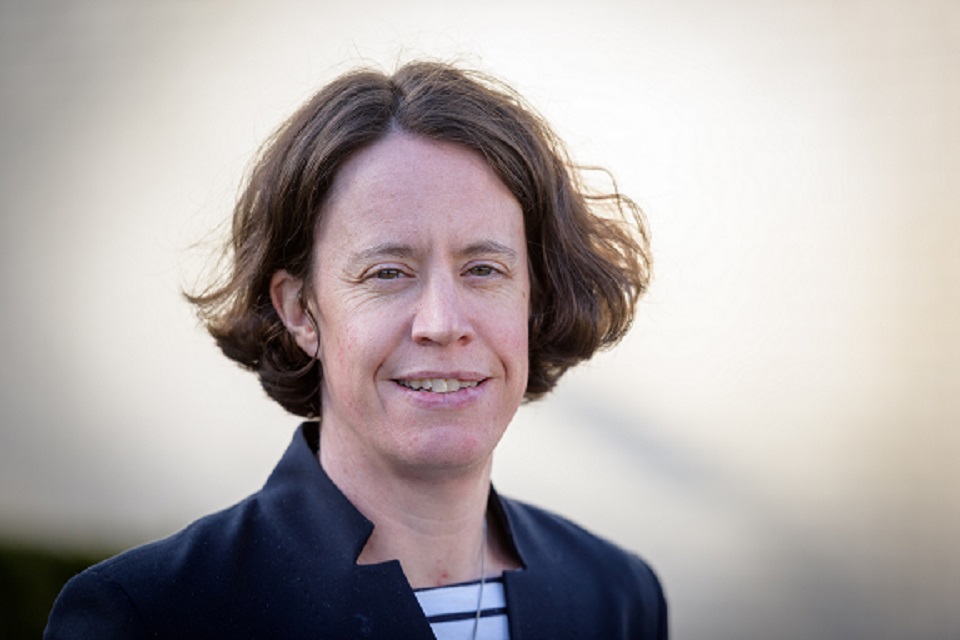
Rebecca Weston, Chief Operating Officer, Sellafield Ltd
3. Overview
Welcome to the 2018/19 Annual Research and Development Review featuring representative research and development projects.
We recognise that investment in research,development and technology transfer is critical for the success of many of our activities and will enable us to safely operate, clean up and decommission the site. In addition, the review acknowledges the contributions of people and the skills that they bring, the company employs scientists, engineers and other technical staff in a variety of roles and this years’ review includes some of our specialists.
Reprocessing at Thorp has ended and in the next few years Magnox reprocessing is due to finish while retrievals and post operational clean out (POCO) gathers pace. This reflects the changing mission of Sellafield Ltd to an environmental remediation and waste management company.
Working collaboratively with the supply chain is a key element of our research and development delivery strategy, It’s about exploring as many different options as possible before progressing those most likely to add value to our business and to help us achieve our mission.
This approach means that we work with a wide range of supply chain companies, organisations and universities and there are more than 60 involved in the delivery of the projects presented in this report. The National Nuclear Laboratory is a key partner, facilitating our link with academia as well as delivering impactful research.
The report presents examples of key research and development managed by the 4 Sellafield Ltd value streams with their research needs captured at the beginning of each section.
In recent years Sellafield Ltd has identified key themes where there are opportunities for the employment of innovative technologies, tools and techniques, to reduce costs, improve safety and reduce timescales, some examples of these programmes are presented in the Strategy and Technical section.
Sellafield Ltd continuously strives to deliver the mission with safe and cost-effective technologies and understands that research and development and the people who make it happen are critical in achieving this aim.
We hope you enjoy reading this document and are inspired to get involved.
Please contact us if you see an opportunity for collaboration and/or coordination of research, development, or technology transfer in our challenge areas:
technical.innovation@sellafieldsites.com
Sellafield Ltd has recently proposed 5 focus areas for innovation.
These are:
- smart stores and store monitoring
- removing the human from harm’s way
- minimising waste volumes
- multi-use decommissioning capability
- aggregation and analysis of data
4. Technical case studies and employee profiles
4.1 Spent Fuel Management
- understanding the impact of decommissioning feeds on the Enhanced Actinide Removal Plant
- treatment of hazardous wastes from Harwell at Sellafield
- remote tube repair innovation
- radiometric characterisation of highly active cells
- characterisation and recovery of material for processing
-
the impact of filter bed plate deformation on flow behaviour
- Sandra Clarke, Spent Fuel Management Ponds Technical Manager
- Jack Denwood, Senior Technical Advisor
- Helen Farris, Encapsulation Plants Technical Manager
- Pat Liddicott, Materials Science and Non-Destructive Evaluation Centre of Expertise Lead
4.2 Special Nuclear Material
- canister development for long-term storage of special nuclear material
- improved efficiency in the inspection of radiographs of special nuclear materials
-
improved understanding of PVC degradation in packages
- Ben Clowes, Graduate Technical Trainee
- Mike James, Strategy and Innovation Manager
4.3 Retrievals
- scientific underpinning for the use of settling aids in legacy retrievals
- underwater measurement of contamination in concrete surfaces
- container design and development for interim storage of hazardous legacy wastes
- liquor management during legacy retrievals
-
development of an integrated effluent modelling tool
- Simon Kellet, Effluents Centre of Expertise Lead
- Anna Adamska, Uranium and Reactive Metals Centre of Expertise Lead
4.4 Remediation
- decommissioning techniques for alpha contaminated gloveboxes and crates
- characterisation of alpha contaminated environments
- protecting, monitoring and assisting the nuclear operator in hazardous environments
- size reduction of metallic intermediate level waste
- waste management and storage of plutonium contaminated waste
- characterisation and size reduction of borderline intermediate level waste
- inspection of inaccessible areas in nuclear facilities
- Decommissioning Capability Development Team
- Barry Lennox, The University of Manchester
- Liz Ostle, Decontamination Technical Support
4.5 Central Strategy and Technical
- Game Changers
- alternative treatment options for future waste challenges
- university engagement
- removal of plutonium powder residues from gloveboxes
- in-situ sampling, processing and analysis
- horizon scanning capability
Katherine Eilbeck, Head of Research and Development, said:
Research and development is essential for a safe, secure and efficient Sellafield and investment in our talented people is key to our success. We value our existing collaborations and look forward to developing new partnerships. Our relationship with Research Councils UK including Innovate UK is important to us, to maximise impact.
5. Spent Fuel Management
The Spent Fuel Management value stream is responsible for the receipt, reprocessing and storage of spent nuclear fuel.
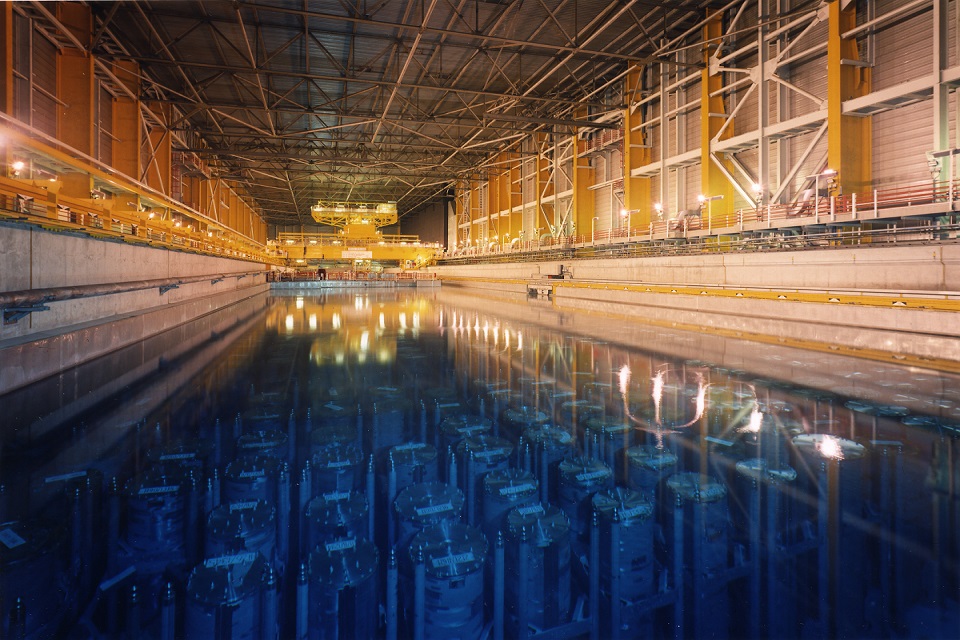
A storage pond in Thorp
Over the next 5 years the value stream will focus on the following research needs:
-
following completion of Magnox reprocessing, research will focus on further underpinning the long-term storage of spent fuel, specifically the interaction between the storage environment and primary containment. For pond storage this translates to prevention of aqueous corrosion of fuel cladding, for ‘dry’ storage systems this means understanding the radiolytic and chemogenic production of gases and ensuring containment systems can tolerate their presence.
-
repurposing encapsulation facilities to enable the processing of new waste streams to support high hazard reduction and broad front decommissioning. Challenges include waste form incorporation, package reduction and encapsulation using alternative matrices for waste streams where cementitious grouts may be unsuitable.
-
the repurposing of effluent treatment facilities to support site Post Operational Clean Out (POCO), whilst ensuing the solutions are the best available techniques and discharges are as low as reasonably practicable.
-
delivering continuous improvements such as reducing waste volumes and increasing plant reliability in high level waste plants.
-
development to enable POCO of Highly Active (HA) evaporation and storage facilities. This includes the development and deployment of radiometric characterisation technologies, development to further underpin the ability of the HA waste treatment plants to handle and immobilise solids bearing POCO feeds.
5.1 Understanding the impact of decommissioning feeds on the Enhanced Actinide Removal Plant
The Sellafield mission is evolving and as plants are decommissioned, changing effluent feeds will be generated for processing in the current treatment plants including the Enhanced Actinide Removal Plant (EARP) and it is essential to understand how these feeds will challenge the plant.
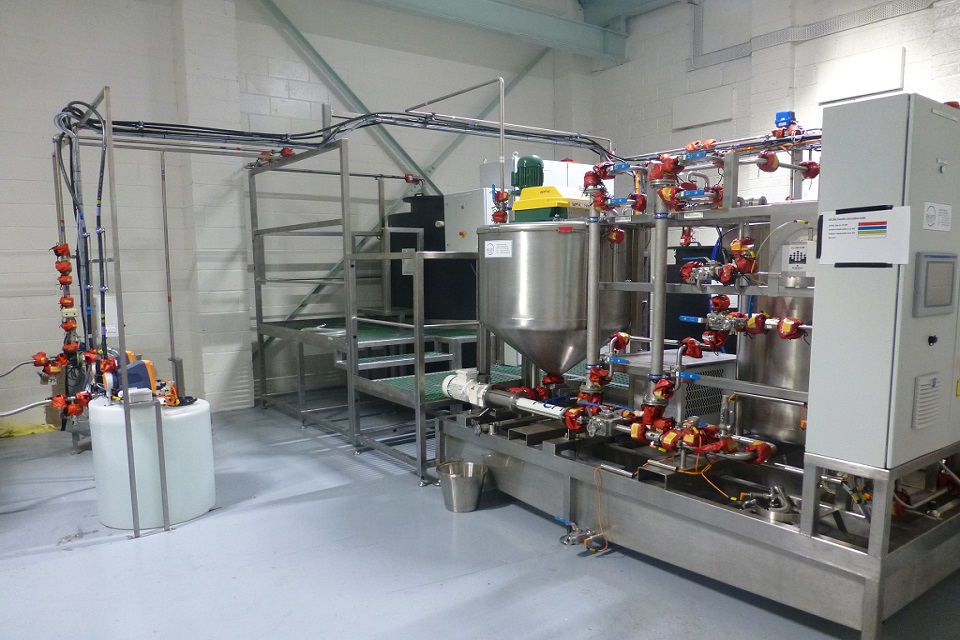
EARP rig experimental programme
An engineering scale rig, with supporting laboratory capability, is being used to provide technical underpinning for the new flowsheet for EARP and to support operational decision making.
In FY 2018/19 rig campaigns were completed on 3 potential feeds to EARP:
-
iron dosing in future feeds - iron levels in the feed to EARP are expected to be lower than feeds from reprocessing operations. Radionuclides are removed from reprocessing feeds by treatment with sodium hydroxide to form a ferric precipitate and rig experiments have shown that, post reprocessing, optimising iron dosing in future feeds will ensure control over both sea discharges and solid waste generation, is maintained.
-
complexant containing decontamination reagents - some complexants are likely to challenge the plant, for example, they may bind to radionuclides in solution and prevent them from being removed by reaction with the ferric precipitate. The experimental programme demonstrated the feasibility of decontamination agents under appropriate controls.
-
Di-butyl Phosphate (DBP) - this is a non-radiological component of the EARP feed stream that could affect plant performance. Data from the experiments have improved the understanding of the fate of DBP in EARP and how to mitigate its impact.
PROJECT - EARP rig experimental programme.
BENEFITS - the experimental programme has provided data to underpin decision making on the future operations of EARP. decontamination operations enable hazard and risk reduction to be accelerated and overall costs to be reduced and treating these effluents in EARP enables these benefits to be realised further.
CURRENT STATUS - the experimental programme discussed here is complete and there is an ongoing programme of work on other potential changes to the site effluent flowsheet. This includes opportunities to reduce environmental impact and cost from other remediation activities. The next phase of the DBP experiments will be rig level trials in 2019/20.
DELIVERY PARTNERS - National Nuclear Laboratory.
CONTACT DETAILS - Dick Blackham.
5.2 Treatment of hazardous wastes from Harwell at Sellafield
The Magnox Encapsulation Plant (MEP) at Sellafield has the capability and capacity to accept more waste feeds than the current Magnox swarf feed which is due to stop at the end of the Magnox Operating Plan in 2020. There’s an opportunity to modify and repurpose existing encapsulation plants, such as MEP, to enable waste from across the Sellafield site and the wider Nuclear Decommissioning Authority (NDA) estate to be packaged and stored ahead of schedule instead of waiting for bespoke waste packaging facilities to be built.
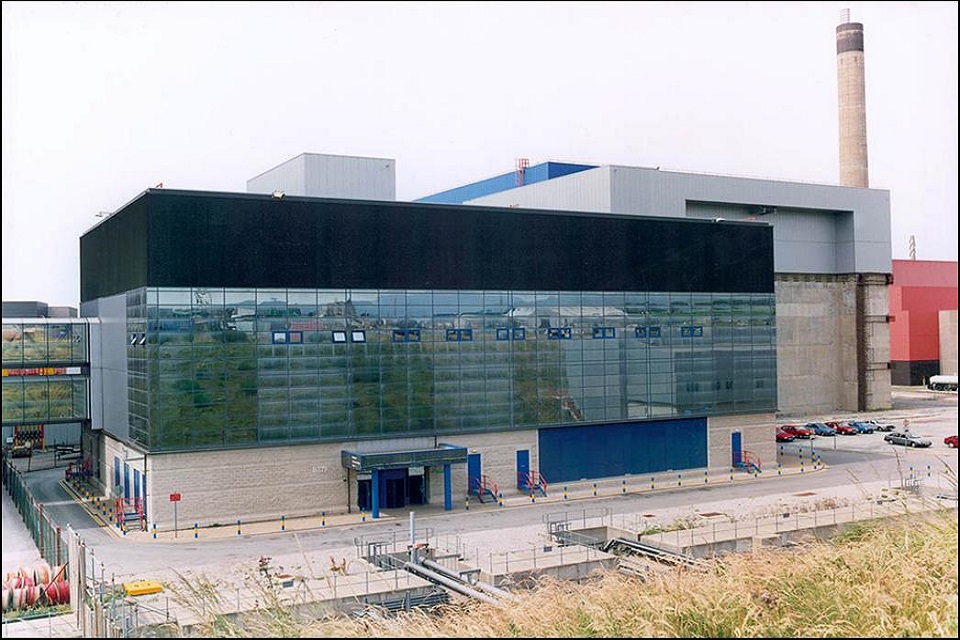
The Magnox Encapsulation Plant at Sellafield
Dragon reactor spent fuel was transferred from an experimental reactor located at Winfrith to Harwell for storage about 15 years ago. The original plan was to process the material at Harwell for long term interim storage prior to disposal, but an opportunity to process the waste in MEP at Sellafield was identified. This approach avoided building or modifying facilities at Harwell, allowing accelerated decommissioning of the site, with significant cost savings to the NDA.
In FY 2018/19 modifications to allow the Dragon Flask to interface with the existing capability in MEP were completed together with the relevant documentation to allow the first shipment to be accepted. Dragon fuel was then processed in MEP and into storage.
PROJECT - dragon fuel waste packages manufactured in Magnox Encapsulation Plant.
BENEFITS - this project enabled the removal of hazardous wastes from the Harwell site by transferring it to Sellafield for processing in existing facilities, reducing costs to the NDA and ultimately the taxpayer.
CURRENT STATUS - waste processing of this type of fuel is business as usual at Sellafield and work is planned so that other materials may be processed through MEP.
DELIVERY PARTNERS - Harwell (part of Magnox Limited).
CONTACT DETAILS - Helen Farris.
5.3 Helen Farris - Encapsulation Plants Technical Manager

Helen Farris, Encapsulation Plants Technical Manager, Sellafield Ltd
After graduation Helen joined the Nuclear Electric (British Energy) graduate scheme and spent 6 years in the Operations Technical Support (Chemistry) Department at Hartlepool power station. This mainly involved sampling and analysis of liquids, oils and gases associated with a running nuclear power station and day-to-day plant support.
Helen then moved to BNFL Research and Technology function to focus on research and development of novel cement systems and reactive metal corrosion. This also included a short secondment to Chapelcross power station to undertake Control of Substances Hazardous to Health Assessments.
Helen joined UKAEA at Dounreay and spent 8 years undertaking various waste management tasks including writing and assessing letters of compliance, feasibility studies, multiple attribute decision making and best practicable environmental assessments, inventory studies and decommissioning strategy plans before returning to West Cumbria.
Helen now manages a team of technical specialists supporting the plants responsible for encapsulating intermediate level radioactive waste in cementitious grout.
Additionally, Helen manages the research and development portfolio that underpins the work to support the continued operations of these plants. This includes managing the technical aspects of the supply of Sellafield Ltd specification cement powders for encapsulation plants across the Nuclear Decommissioning Authority (NDA) estate.
Helen is a Chartered Chemist and enjoys the variety of roles and tasks that she undertakes daily.
She says:
I’m particularly proud of the way that we are repurposing the encapsulation plants which have completed their intended mission, allowing us to reduce high hazards on site, ahead of schedule. I like to believe that the work we do supports the NDA mission and leaves a safer legacy for future generations.
5.4 Patricia Liddicott - Materials Science and Non-Destructive Evaluation Centre of Expertise Lead

Patricia Liddicott,Materials Science and NDE CoE Lead, Sellafield Ltd
The Centres of Expertise (CoE) are Sellafield Ltd’s subject matter experts in various scientific areas providing support to the value streams. Pat has led the CoE for Materials Science and Non-Destructive Evaluation since 2011 and manages a team to resolve technical queries ranging from assessing the degradation of materials in systems to advising on the use of new materials.
Pat joined BNFL for a different challenge after 17 years with BAE Systems in Barrow and has enjoyed a varied technical career in the nuclear industry for almost 20 years. She first joined the Materials and Plant Inspection team in the research and technical function before moving on to high level waste plants to manage the inspection programme. Pat organises knowledge share events, to share materials challenges with the supply chain.
As well as her CoE role Pat enjoys promoting science and engineering through related activities such as STEM.
Pat recently organised a workshop at a school in Barrow to explain to school children how different materials can be used for the same purpose. In 2014 Pat was awarded Fellowship of the IOM3 (Institute of Materials, Minerals and Mining), she is also Sellafield Ltd’s senior coordinator for IOM3 and is responsible for ensuring new and existing employees are mentored towards chartership.
The Sellafield Ltd graduate scheme was recently accredited by IOM3, with positive feedback which Pat is very proud of. Pat lectures on the Gen 2 Plant Engineering Degree course and is an industrial supervisor for a PhD student.
5.5 Remote tube repair innovation
The Medium Active Salt Free Evaporator (MASFE) processes medium active liquors and will provide site evaporative capacity for at least 10 years. Previous repairs on heat exchanger tubes in similar vessels of lower activity were found to be difficult and time consuming and would not be suitable for higher activity vessels such as MASFE.
To mitigate against the risk of programme delays, while repairs are carried out, an innovative approach to the fast repair of tubes was required suitable for vessels with higher radiation levels.
A collaborative project was initiated to develop a remote repair technique that can be deployed via a 150mm diameter inspection port using existing inspection equipment.
Development work considered several methods to expand a metal sleeve inside a tube, including explosive bonding and ice dams to contain hydraulic pressure, before selecting hydraulic expansion of a bladder consisting of a short length of hydraulic hose.
During development it was found that while a leak tight metal to metal seal could be made with a smooth tube, when the tube internal surface was roughened to represent corrosion, a seal could not be guaranteed. The hydraulic pressure could not be increased any further without damaging the corroded parent tube. This problem was overcome by fitting acid resistant polymer O rings to the metal sleeve which could then make a seal even at lower hydraulic pressure.
Rig trials were completed using the deployment equipment already used on plant with simple modifications, making the technique easy to integrate into existing plant operations.
During 2018/19 the technology was deployed on the nitric acid recovery reboiler, saving several months of plant downtime.
PROJECT - Thorp MASFE tube repair innovation.
BENEFITS - this project has developed a repair technique that removes the need for time consuming repairs requiring scaffolding and cutting into vessels leading to lengthy programme delays. Remote, out of cell deployment ensures that there is no dose uptake to the operator.
CURRENT STATUS - the technique was successfully deployed on the nitric acid recovery reboiler in 2018/19. For application on other vessels with different geometry, rig trials would be required to confirm compatibility with the specific inspection deployment equipment.
DELIVERY PARTNERS - National Nuclear Laboratory and Wood.
CONTACT DETAILS - Jonathan Street.
5.6 Radiometric characterisation of highly active cells
As areas of the Highly Active Liquor Evaporation and Storage (HALES) facility approach Post Operation Clean Out, there is a requirement to gather information on the residual inventory remaining in the vessels and its distribution, so that a washout strategy can be developed.
Sellafield Ltd has been developing a radiometric characterisation device to provide this information and to generate a baseline from which the effectiveness of washout operations can be determined.
The highly active evaporators are challenging to characterise due to limited access to the vessels which are contained in shielded cells. Current characterisation tools are not compatible with the access ports available and this was the driver for the need to develop a new technique.
Utilising experience of deploying ultrasonic thickness measurement equipment into evaporators, the characterisation device consists of a silicon carbide detector within a waterproof capsule on an umbilical deployment system.
The device can be deployed via the helical cooling coils and can take high dose gamma readings of up to 100 Sv/hour within the vessel. These measurements can then be used to produce a dose profile and the most likely activity distribution.
In February 2019 the device was successfully deployed to collect the first set of data from a highly active evaporator on the Sellafield site and it is now part of the characterisation toolkit.
PROJECT - characterisation of highly active cells using a silicon carbide detector.
BENEFITS - this project has developed a characterisation technique capable of deployment through existing cooling coils. It can be used during washes to judge the effectiveness of the process and as a result the clean-out operation monitored and optimised for efficient hazard reduction.
CURRENT STATUS - the equipment is now part of the characterisation toolkit and will be used until the end of Post Operation Clean Out.
DELIVERY PARTNERS - National Nuclear Laboratory.
CONTACT DETAILS - Matthew Haigh.
5.7 Characterisation and recovery of material for processing
Thorp will start Post Operation Clean Out (POCO) in Autumn 2019 following the end of shearing operations in November 2018.
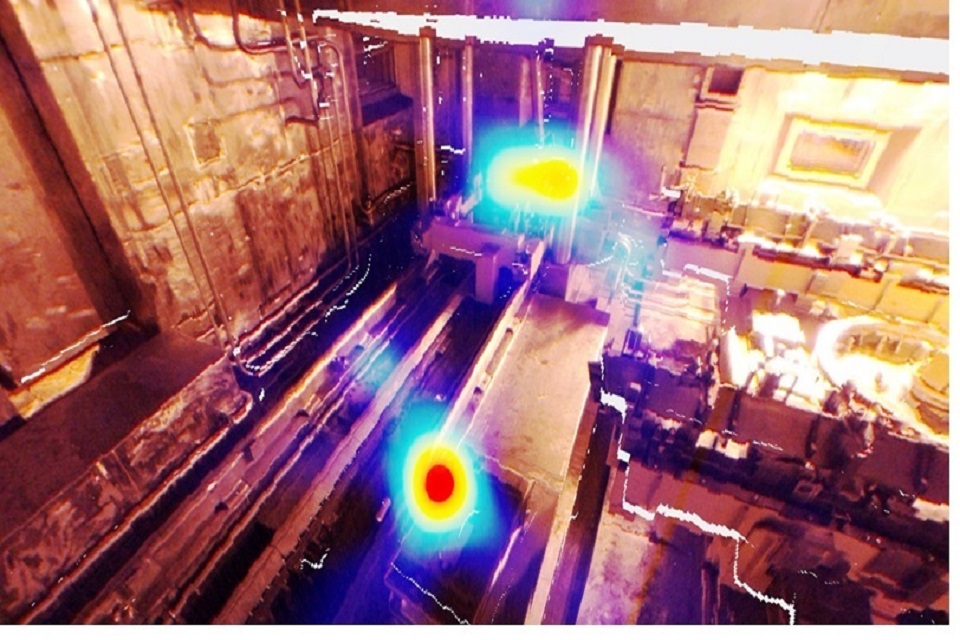
Use of 3D radiometric characterisation
Before closure of reprocessing operations there was a requirement to recover and process the maximum practicable mass of fissile material held up in the plant prior to POCO. This included fuel debris from the shear cave floor which had accumulated over the lifetime of Thorp, consisting of various lengths of fuel pin, fuel dust and small miscellaneous items such as springs and cladding material.
The material was collected using a bespoke remotely operated vehicle with a variety of tooling and transferred into 2 containers within the cave, designed to be sheared in the same way as fuel assemblies. Following this successful recovery, a visual inspection and a 3D radiometric scan (using N Visage technology) of the cell was undertaken to confirm that sufficient material had been collected to meet the safety case requirements to allow the cave to be washed with water.
These revealed further dust and sections of fuel pins as “hot spots” which had not been evident to the visual inspections. Further cleaning was carried out, recovering more fuel debris to leave the cell in the required state.
PROJECT - use of 3D radiometric characterisation and recovery of material from Thorp Shear Cave.
BENEFITS - by recovering fuel debris from the cell into the dissolution process while it was still available, Sellafield Ltd ensured that fissile material was correctly routed into products and fuel cladding was disposed of to the existing waste route.
CURRENT STATUS - washes may now be carried out as part of POCO with the minimal inventory remaining being disposed of via effluent treatment plants. The 3D gamma scan demonstrated its benefit in characterising a cell during POCO.
DELIVERY PARTNERS - delivered by Sellafield Ltd only.
CONTACT DETAILS - Jonathan Street.
5.8 Sandra Clarke - Spent Fuel Management Ponds Technical Manager
Sandra completed a Master’s in Chemistry at The University of Manchester before joining the graduate programme in October 2008. After spending time in Strategy and Technical and Legacy Ponds and Silos, Sandra moved to Spent Fuel Management and supported the delivery of the advanced gas-cooled reactor interim storage safety case, the case that allows Sellafield Ltd to change its fuel strategy from receipt of fuel for reprocessing in Thorp to receipt of fuel for storage.
Sandra now manages the team responsible for assessing all fuel receipts to the Sellafield site and their storage in ponds. The team:
- monitors and aims to improve storage regimes within the Sellafield operational ponds
- interfaces with fuel consignors – Magnox Ltd, EDF Energy, Dounreay Site Restoration Ltd to ensure fuels can be received and managed safely and in a timely manner
- undertakes research and development projects to understand how fundamental science will affect spent fuel behaviour over its storage life-time
- carries out assessments and recommends appropriate wet or dry storage regimes for receipt of new fuel types.
Sandra is a Chartered Chemist and Sellafield Ltd’s representative on the IAEA’s Spent Fuel Research Programme, she says:
Sellafield has so many opportunities to tackle unique technical challenges. I work in a multidisciplinary environment with a variety of stakeholders looking to find novel and cost-effective solutions for spent nuclear fuel management; there are so many interesting things to do and no two days are the same.
5.9 Jack Denwood - Senior Technical Advisor
After 6th form, Jack heard about a Gen2 higher education training scheme which offered the opportunity to gain a degree whilst working and gaining experience.
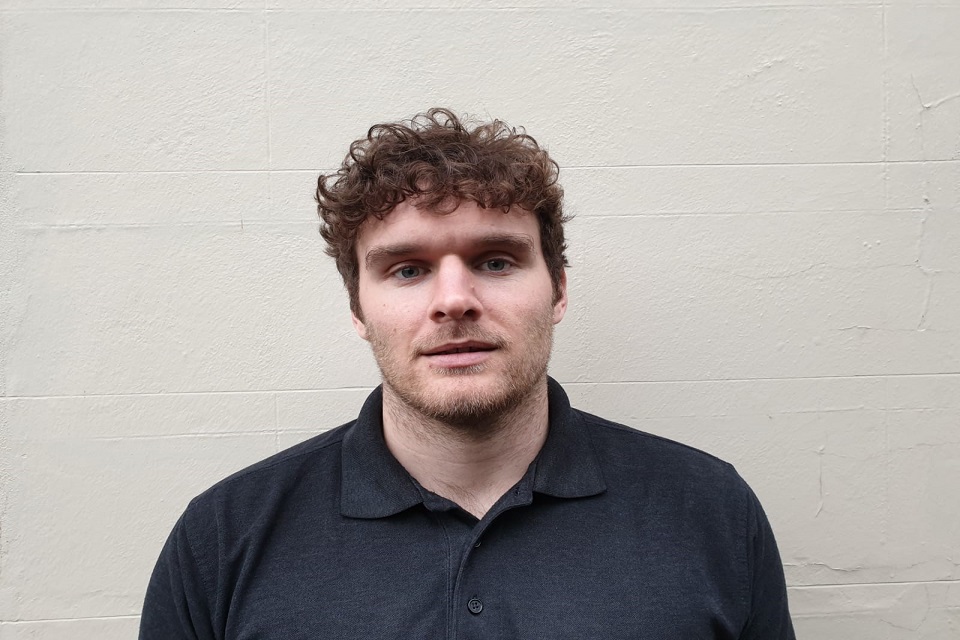
Jack Denwood, Senior Technical Advisor, Sellafield Ltd
Jack joined the Technical Specialist Trainee scheme (now called the Degree Apprenticeship Scheme) in 2010 and went on to achieve a 1st class honours degree in Plant Engineering and ‘Student of the Year’ in 2015 from the Institute of Measurement and Control.
Since 2012 Jack has been responsible for the delivery of the highly active liquor evaporation statutory inspection programme, playing a major role in the investigation of plant issues and the safety of others during plant operations.
In recent years Jack’s role has expanded to cover other plants such as the Waste Vitrification Plant and the Vitrified Product Store with added complexity and more “first of a kind” investigations.
With the increasing need to deploy new technologies and equipment into cells to characterise vessels to aid POCO strategies, Jack has an important role by providing valuable input into the design of new devices to ensure that they can be deployed and retrieved in a safe manner. This involves providing insight gained from plant experience at the design stage right through to attendance at equipment trials.
Jack is continuing his professional development and is working towards becoming a Chartered Engineer. He also shares his experiences within the company by mentoring other trainees and by continually offering support both academically and with their development as professionals. Further afield, Jack is a STEM ambassador.
5.10 The impact of filter bed plate deformation on flow behaviour
There are 5 identical universal vessels in the Site Ion-Exchange Effluent Plant (SIXEP) process, 3 sand bed filters and 2 ion exchangers containing clinoptilolite to remove radioactivity from effluents before discharge to sea.
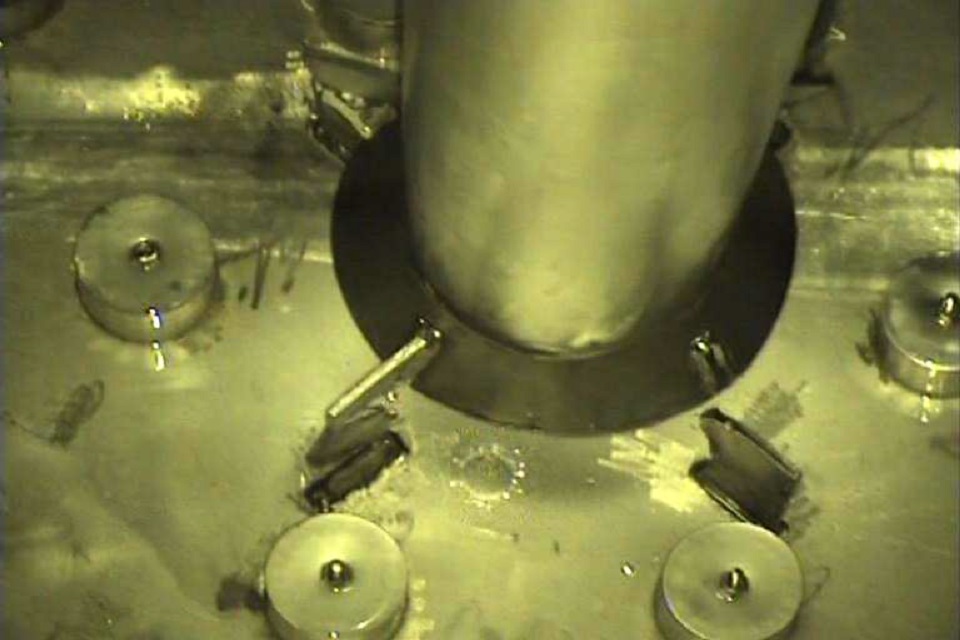
The discharge pipe support brackets
The sand and clinoptilolite are periodically discharged from the vessels via a discharge pipe positioned at the centre of the filter bed, close to the bed plate. During one of these periodic emptying of the vessels, inspections revealed failure of the discharge pipe support brackets and that bed plate deformation had occurred, specifically the distance between the filter bed plate and discharge pipe entrance had increased.
This caused uncertainty over the performance of the filter bed and a desk top study was undertaken to determine if there is a maximum distance between the pipe and the bed plate beyond which the discharge procedure would cease to function.
In FY 2018/19, the National Nuclear Laboratory completed a study using computational fluid dynamics to simulate the flow in the universal vessels. It concluded that the vessels are expected to continue operating effectively, and that small deformations of the filter bed will have a minor impact on their performance.
PROJECT - computational fluid dynamics to simulate flow in SIXEP universal vessels.
BENEFITS - this desktop study improved understanding of the potential failure mechanisms of the universal vessels and it concluded that the vessels are expected to continue operating effectively, and that small deformations of the filter bed plate will have a minor impact on their performance.
CURRENT STATUS - this project is complete.
DELIVERY PARTNERS - National Nuclear Laboratory.
CONTACT DETAILS - Peter Rand.
6. Special Nuclear Material
The Special Nuclear Material (SNM) value stream is responsible for the safe, secure and appropriate storage of special nuclear materials.
Over the next 5 years the value stream will focus on the following research needs:
-
understanding the behaviour of chemical and physical forms of plutonium to ensure long-term safe management and storage, focussing on aspects such as radiolysis, evolution of sealed packages, corrosion, behaviour of impurities such as chlorides and the requirements for future conditioning.
-
innovative approaches to the safe operation of facilities handling and storing plutonium, these could include technologies such as robotics, automation and digital applications for alpha environments.
-
continued technical underpinning of Post Operational Clean Out and decommissioning plans for alpha facilities.
-
techniques for the monitoring, retrieval and processing of residual product in gloveboxes, plant, equipment and facilities during post operational clean out and decommissioning.
-
direct support to the special nuclear materials consolidation programme.
6.1 Canister development for long term storage of special nuclear material
The Sellafield Product and Residues Store (SPRS) is a modern store on the Sellafield site for the long-term safe and secure storage of plutonium canisters. Since the current cans in use at Sellafield, have a life expectancy of about 25 years, a project has been researching a modern can that can be stored for up to 100 years without degradation.

A prototype plutonium canister
The aim is to repackage material in existing canisters into modern canisters in the Sellafield Product and Residue Store Treatment Plant, ready for storage in SPRS.
Existing canisters are 1mm thick steel created by drawing out steel into a can shape, a lid is then attached using resistance seam welding which can be a difficult process leading to variable welds.
More modern can designs and manufacturing techniques include:
- 3mm 316L grade stainless steel cans created through a deep drawn process, similar to the existing cans, and a Tungsten Inert Gas (TIG) weld applied to create the top.
- milling a 3mm 316L stainless steel pipe and use of a TIG weld for the top and bottom of the can.
- a more radical design choice could be a highly corrosion resistant, nickel-based alloy known as INCONEL
- other techniques such as flow forming where steel is spinning very fast while a tool forms the shape of the outer package over a mandrel.
Since the project started in 2017/18, the supply chain has been engaged in the development of a number of new designs, created from both stainless steel and potentially INCONEL.
Testing of prototypes began in 2018/19 with an optimum design expected to be chosen in 2019/20.
PROJECT - can development and testing programme
BENEFITS - this project aims to deliver an alternative can design suitable for the long-term storage of special nuclear material, using different manufacturing techniques and materials than the conventional route. A suitable can will extend the lifetime performance of materials, reducing the need for handling and operator dose uptake and protect against the risks of single source suppliers.
CURRENT STATUS - a testing programme for manufacturing capability including weldability and initial pressure-withstand is in progress and this will be concluded in financial year 2020/21.
DELIVERY PARTNERS - Goodwin International Ltd, West Cumberland Engineering Ltd, TSP Engineering Ltd, Nuclear Advanced Manufacturing Research Centre.
CONTACT DETAILS - Mark Greaves.
6.2 Improved efficiency in the inspection of radiographs of special nuclear materials
As part of the Nuclear Decommissioning Authority’s programme to consolidate special nuclear materials in one place, transfers of these materials have been taking place from Dounreay to the Sellafield site.
Shipments to the site are accompanied by radiographs which are visually inspected by analysts, sometimes up to 40 in a day, each requiring verification, this is a time-consuming process and a project was undertaken to improve efficiency and reduce human error.
During 2018/19, National Nuclear Laboratory began developing image recognition software that can be used to improve radiograph inspections by automatically identifying key items of interest for each radiograph and uploading this information into a pre-existing database.
The software uses an edge detection technique and can detect:
- cans, their types and dimensions
- approximate volumes
- the type of contents within a can such as clinker, powder or pellets
PROJECT - image recognition software for Dounreay materials transfers.
BENEFITS - this project has the potential to significantly improve radiograph inspection times with faster processing of materials transferred from Dounreay, allowing analysts to focus on other tasks.
CURRENT STATUS - the software is expected to be installed in the summer of 2019, this will be followed by a trial period with detailed learning from experience included in any further amendments.
DELIVERY PARTNERS - National Nuclear Laboratory.
CONTACT DETAILS - Ewan Williams.
6.3 Improved understanding of PVC degradation in packages
Over the many decades of operations, plasticised polyvinyl chloride (PVC) film has been used to bag-out special nuclear material containers. When plasticised PVC is exposed to high heat and/or radiation, it will release degradation products that include hydrogen chloride gas, which can lead to the generation of corrosive hydrochloric acid that could limit package lifetimes.
Previous work has demonstrated that plasticiser type can have a pronounced effect on the thermal and radiation stability of the plasticised PVC bagging material, and work carried out worldwide has also shown that radiation combined with heat has a synergistic effect on the rate of plasticised PVC degradation.
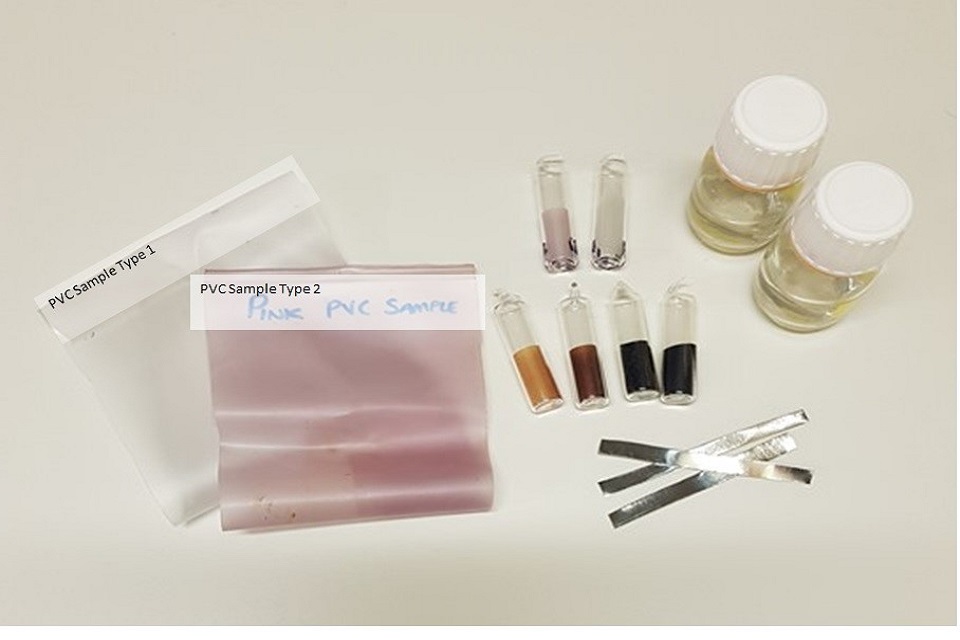
Experimental programme on PVC samples
In 2018/19, building on previous work, a series of experiments began to explore the effects of simultaneous exposure to radiation and heat on 2 different plasticised PVC films. The testing programme involved sealing ~150 mg PVC film samples into small glass ampoules and exposing them to a range of simulated storage environments:
PVC experimental parameters
Environment PVC is placed:
- air at 40% and >90% humidity
- Argon (inert atmosphere)
- Oxygen rich (40% oxygen, 60% nitrogen)
Radiation exposure:
- use Cobalt 60 gamma irradiation facility
- 0.56 Gy/h – expected dose rate in packages
- 10 Gy/h
Temperature of PVC samples:
- 70 oC, 80 oC, 100 oC and 110 oC
Duration of heating and irradiation:
- 30, 180, 270 and 360 day duration PVC tests
Metal coupons were incorporated into selected ampoules to allow initial assessment of the effects of the degradation products.
The experimental programme is ongoing, however the following preliminary observations have been made:
- pronounced colour changes
- significantly lower chloride yields have been observed from plasticised PVC films when irradiated and heated at high humidity
- at higher temperatures but low radiation dose rates, initial data suggest that thermal ageing appears to dominate the dehydrochlorination process
PROJECT - experimental programme on PVC samples under varying conditions.
BENEFITS - this project will provide improved confidence in the prediction of package lifetimes.
CURRENT STATUS - the project is ongoing with test results and analysis expected by the end of FY 2019/20.
DELIVERY PARTNERS - Wood.
CONTACT DETAILS - Helen Steele.
6.4 Ben Clowes - Graduate Technical Trainee
Ben joined the Special Nuclear Material Technical Team at Sellafield in October 2018. After first gaining a BA in Natural Sciences at Cambridge, Ben completed a Master’s in Materials Science, focussing on the impact of radiation on materials in reactors and waste forms and this gave him a good understanding of how important materials selection is in the nuclear industry.
The graduate programme provides structured placements across a range of disciplines within Sellafield Ltd and this has enabled Ben to gain knowledge, develop his skills and build up his experience within the company.
During his first 4 months, Ben was involved in a project to develop a new Post Operational Clean Out programme for the Waste Vitrification Plant.
Outside the office Ben is a STEM ambassador, working with local schools to inspire young children in science, technology, engineering and mathematics.
Ben says:
I enjoy being on the graduate scheme, there are opportunities to work on a variety of engaging topics. I get a good understanding of how my work contributes to the whole site, through plant tours and placements in other parts of the company. I get a sense of satisfaction from contributing to keeping the UK’s stockpile of nuclear materials safe and secure.
6.5 Mike James - Strategy and Innovation Manager
Mike joined BNFL in 1984 after gaining a BSc in Applied Chemistry and spent 20 years in Analytical Services, initially as a research chemist developing new analytical methods for testing a variety of product and waste materials.
He spent several years as a team leader, continuing his research interests, as well as setting up specialist testing capabilities for the commissioning of Thorp and vitrification plants.
Mike moved on to the role of Analytical Services Quality Manager in 1999 and was then Head of Analytical Services for 3 years.
Moving onto a variety of other opportunities including support to development of lifetime plans for the Sellafield site, Mike set up and developed several innovation groups, led a major stakeholder engagement programme to support the development of the site’s low-level waste strategy and investigated the application of thermal treatment for the immobilisation of various intermediate level waste materials.
Mike’s current role is in the Special Nuclear Material value stream and is responsible for providing the strategic direction to deliver its mission for safe and secure management of special nuclear materials, plutonium and uranium. He also coordinates innovation across the value stream and chairs a number of groups and committees.
Mike is the senior coordinator for the Royal Society of Chemistry (RSC) accredited scheme that over the past 18 years has helped at least 100 chemists achieve their Chartered Chemist status.
He says:
I’ve had an enjoyable career to date and this continues in my current role and for me it’s because of the variety, the challenge, the interesting topics and most of all the people I’ve worked with. I am very proud of my work supporting the development of professional chemists and the RSC accredited scheme and seeing high calibre chemists develop.
7. Retrievals
The Retrievals Value Stream is responsible for the retrieval of nuclear waste, fuel and sludge stored in Legacy Ponds and Silos.
Over the next 5 years the value stream will focus on the following research needs:
- to ensure existing facilities and ongoing operations are not adversely affected by the introduction of planned retrievals activities (for example continuous operation of effluent treatment plants)
- development of condition monitoring and inspection capability to demonstrate that retrieved waste behaviour is consistent with predicted behaviour during the storage period
- continued development of innovative techniques for waste retrievals
- preparation for decommissioning of legacy facilities (for example concrete characterisation in preparation for dewatering one of the ponds)
7.1 Scientific underpinning for the use of settling aids in legacy retrievals
Effluent generated during Magnox Swarf Storage Silo (MSSS) retrievals will be treated in the Site Ion-Exchange Effluent Plant (SIXEP) which removes radioactivity before discharge to sea. A risk has been identified that beta-star (the term used for a milky suspension of poorly-settling magnesium material) could be generated during silo waste retrieval operations.
This could be problematic for both retrievals operations within MSSS and SIXEP if the material were to be transferred into the effluent stream.
A joint research and development programme was initiated in FY 2018/19 with the National Nuclear Laboratory (NNL) and which focussed on 5 key experiments with 2 settling aids (FLOPAM-FA 920-SEP and Magnafloc 351), both of which are non-ionic polyacrylamides used in conventional water treatment.
The main focus of this, was to underpin the deployment of the settling aids for the treatment of beta-star within the effluent stream.
The results were as follows:
-
settling aids tests on beta-star suspensions, produced by corroding Magnox metal turnings in the presence of chloride and silicate, showed that effectiveness of the settling aid depends on the concentration of the suspended beta-star solids. The data from the experiments were used to define a range of dosing concentrations for each settling aid for potential use in treating beta-star suspensions if they occur during retrievals operations.
-
a sand bed filtration rig in the NNL Workington facility was used to investigate the compatibility of the settling aids with the SIXEP process. Testing with FLOPAM_FA 920-SEP showed no impact on the performance of the filter and further tests are planned in FY 2019/20 with Magnafloc 351.
-
successful shaking and foaming tests were undertaken to ensure that deployment of settling aids would not have an impact on the SIXEP carbonation tower, the process step which corrects the effluent pH. These found that none of the settling aids would foam if discharged into the effluent stream.
-
Ion-exchange is used in SIXEP to remove Cs-137 and Sr-90 from effluents and testing, supported by modelling work, showed that performance was not compromised by either settling aid. This included the use of a novel (rapid) approach to ion exchange testing, the implementation of which significantly reduced the overall costs of the research and development.
-
experiments to assess the disposability of settling aids, and their behaviour in repository conditions, are ongoing and are expected to feed into a decision on settling aids deployment.

Two settling aids as part of the Research and Development Programme
PROJECT - Settling aids Research and Development Programme.
BENEFITS - the experimental work has increased the maturity of the technology from a theoretical idea to a “proof-of-concept” mitigation option and should they be required, would allow for the settling aids to be deployed into the effluent stream to target the removal of slow settling material during legacy waste retrievals, avoiding programme delays.
CURRENT STATUS - work to substantiate the deployment of settling aids will continue in order to improve the technical maturity as a mitigation option into FY 2019/20.
DELIVERY PARTNERS - National Nuclear Laboratory.
CONTACT DETAILS - Bruce Rigby.
7.2 Underwater measurement of contamination in concrete surfaces

Characterisation of residual sludge tank walls
To prepare for the safe dewatering of legacy facilities such as open-air ponds, Sellafield Ltd has been trialling a technology called non-destructive depth profiling, known as D:EEP. Building on previous work where D:EEP was used in the Pile Fuel Storage Pond (PFSP) as part of a dewatering trial and then on further trials in the First Generation Reprocessing Plant (FGRP) the natural next step was to trial the technology in an underwater environment.
This project is an ongoing collaboration combining Createc’s scanning and modelling technology with Costain’s physical framework and waterproof protection.
Phase 1, completed in FY 2018/19, had 3 main objectives:
- the deployment of D:EEP technology in an active environment, the residual sludge tanks, to understand the challenges associated with its very first underwater deployment.
- an understanding of whether the activity contained in the wall is surface deep (similar to PFSP main pond wall) or more deeply entrained within the wall structure (similar to PFSP bay walls). Reproducibility of the technique was more important than obtaining absolute values at this stage.
- to determine if activity penetration within the wall increases with water depth (i.e. with increasing hydrostatic pressure).
The trial was successfully completed in May 2018 and analysis of the data showed that 90% of the contamination is within the first 4mm of the tank walls, this is crucial information because it can be used to determine the minimum amount of wall material that needs to be removed for bulk decontamination.
The next phase of the project will be to collect and analyse samples of the concrete walls for comparison with the data obtained using D:EEP and to underpin the dewatering strategy for the tanks and other legacy ponds at Sellafield.
PROJECT - Characterisation of residual sludge tank walls.
BENEFITS - this project has a number of benefits including not having to partially dewater in order to perform above water measurements (this is very expensive to organise and implement); reduced airborne contamination when compared with physical sampling techniques and therefore improved safety. Accurate characterisation of facilities enables robust waste sentencing, for example intermediate level waste is more expensive to store and dispose of than low level waste. Once validation of the technique has been completed, samples will not be required for comparison.
CURRENT STATUS - the technology is currently being considered for use in other facilities at Sellafield.
DELIVERY PARTNERS - Create Technologies Ltd. and Costain Group PLC.
CONTACT DETAILS - Phil Hayward.
HIGHLIGHT - NDA Supply Chain Awards – NDA Group Collaboration Award - Highly Commended, Sellafield Business Awards 2018 – Gold and Sellafield Business Awards 2018 – Winner of the Managing Director’s Award
7.3 Container design and development for interim storage of hazardous legacy wastes
The Magnox Swarf Storage Silo (MSSS) waste packages will consist of skips of waste inside a 3m3 box with an internal concrete bund and their design is key to the success of the interim storage concept for MSSS wastes.
The aim of the project is to retrieve waste into skips without the need for further treatment and packaging within boxes for interim storage. The planned approach maximises the amount of waste placed in a package, whilst allowing hydrogen to be released without the waste drying out, thus lowering the risk of thermal instability.
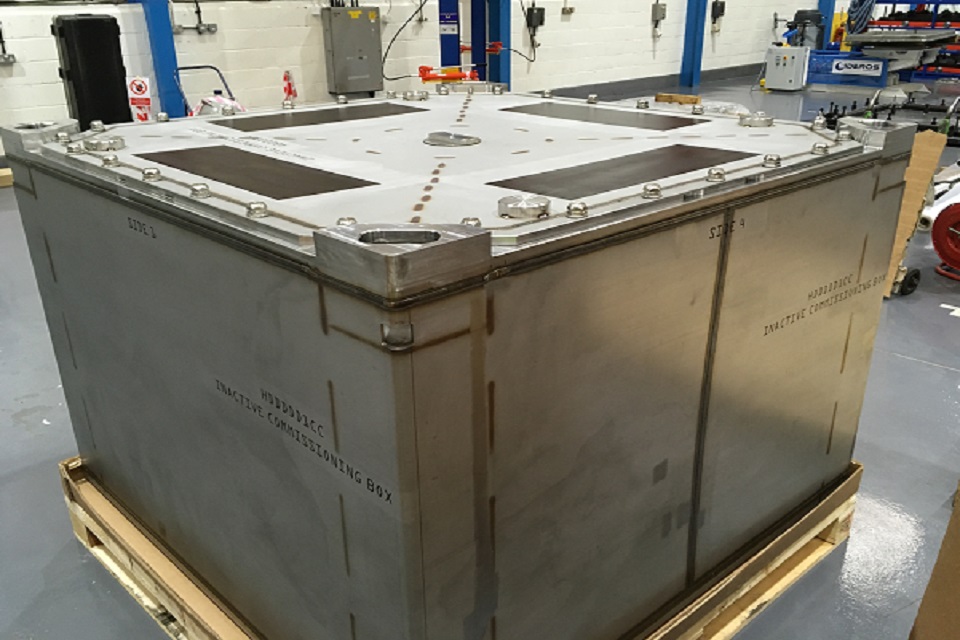
3m3 box project
A 3 year experimental programme of work has a generated a skip and box design with the following key elements:
- construction materials for the skip, box and lids have been tested for corrosion and selected.
- the type of skip and box filters have been selected based on their performance in the removal of hydrogen from the skip ullage and retention of water in the skip. Extensive trials were carried out to assess the control of hydrogen using various skip and box filter sizes and arrangements and the filter material was tested for corrosion in challenging environments in both the short and long term.
- commercial off-the-shelf skip seal selection was undertaken following extensive testing using innovative methods to assess performance in meeting sufficient decontamination factors for aerosols and particulates. The seals were also tested for chemical, physical and radiation integrity.
- the formulation for the concrete bund was determined following both innovative and standard small and large-scale trials to produce a bund with acceptable crack size and that can withstand transport and handling.
PROJECT - 3m3 box project.
BENEFITS - this project has provided a robust skip and box design with selected materials that have been underpinned with an experimental programme, providing confidence in the long-term interim storage concept for MSSS wastes.
CURRENT STATUS - the development programme is complete to mid technology readiness level with manufacturing trials planned for 2019.
DELIVERY PARTNERS - DBD Ltd., National Nuclear Laboratory, London South Bank University, Fauske & Associates, LLC, Exova (now part of Elements Materials Technology), Stainless Metalcraft (Chatteris) Ltd.
CONTACT DETAILS - Sushma Davison.
8. Liquor management during legacy retrievals
Magnox Swarf Storage Silo (MSSS) is a legacy facility that was built in the 1960s for underwater storage of fuel cladding arising from decanning of Magnox fuel elements. The original building was built with 6 compartments and subsequently extended 3 times (named 1st, 2nd and 3rd extensions), it now comprises of 22 vertical concrete silos that were in active use between 1964 and 1991.
The planned retrievals strategy for the compartments in the 2nd and 3rd extension is bulk solids retrieval followed by removal of hazardous liquor transferred by bulky, shielded pipe bulges installed post retrieval. These bulges present a significant space management challenge that could compromise the ability to retain the bulk retrieval equipment to address retrieval of residual material.
A new strategy has been developed which provides buffer storage for all MSSS liquors, by making use of partially empty compartments enabling bulk liquors to be removed gradually and earlier than in the original programme.
The use of the buffer smooths the feed of liquor to the Site Ion-Exchange Effluent Plant (SIXEP), provides contingency for challenging liquors and decouples MSSS from downstream treatment plants. The innovative scheme uses simple remotely deployed pumps to move liquor via existing connections between the building compartments.
Building on proof-of-concept trials on the liquor transfer system in 2017, by the Sellafield Ltd Innovation Centre, a successful active trial was completed on the plant in December 2018 which demonstrated transfer of liquor between compartments.
PROJECT - management of liquor during MSSS retrievals.
BENEFITS - the project has defined an alternative scheme that has the potential to reduce the risk and hazard reduction programme in MSSS by 2 years by managing liquor removal to SIXEP using simple cost-effective pumping technology.
CURRENT STATUS - the trial pump installed for the active demonstration has been retained for operational use and the next phase of the project will focus on extending pump capability to other compartments.
DELIVERY PARTNERS - Nichols Group.
CONTACT DETAILS - Mike Wilcock.
HIGHLIGHT - Sellafield Business Awards 2018 - Silver
8.1 Development of an integrated effluent modelling tool
The Magnox Swarf Storage Silo (MSSS) consists of 22 compartments which have stored solid waste underwater since the 1960s and operations to recover and treat wastes from this plant can be enhanced through modelling techniques so that plant operations can be better understood and monitored, enabling real time response to changes and optimisation.
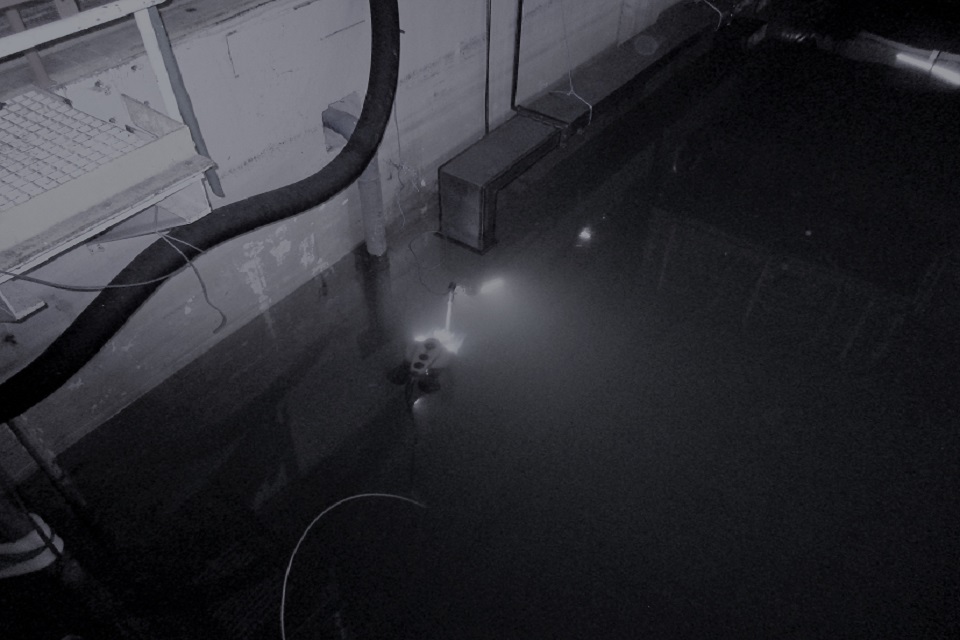
Management of liquor during MSSS retrievals
An integrated modelling tool or “digital twin” of MSSS has been created which uses sampling data and a combination of modelling approaches covering chemistry, flowsheets and operational modelling.
In FY 2018/19, the effluents team focussed on the delivery of a number of key tasks, including:
- preparation of baseline retrievals flow sheets covering solids and effluents
- updated trending capability of silo liquor database
- sample data checks against chemical simulations
- integration of gPROMS and the silo liquor database
- verification and validation of final species in the NuThermo database
The model can be adopted for use on any plant at Sellafield for the management and analysis of solid, liquid and gaseous data and it has replaced traditional operational flowsheets with real time flow sheeting which is new to the Sellafield site.
The model provides:
- fast and easy data entry
- controlled access
- real time and future plant performance trending for example, it calculates leaching from solid waste over time, quantifies the impact of different operations and characterises the compartments individually and as a group
- removal of error traps such as, unit changes and decay of active samples from the date of analysis and it identifies anomalies or potential colloids by their solubility
PROJECT - Integrated modelling tool for MSSS effluents.
BENEFITS - The modelling tool has fast and easy data entry functions, automated calculations and provides an audit trail. It will improve the management and analysis of data leading to cost savings over the lifetime of MSSS retrievals and it can be adopted for use on other Sellafield plants.
CURRENT STATUS - this is an ongoing project and the purpose of the next phase of work, in FY 2019/20, is to complete development of the modelling platform to support MSSS retrievals.
DELIVERY PARTNERS - National Nuclear Laboratory.
CONTACT DETAILS - Wallis O’Brien.
HIGHLIGHT - Sellafield Business Awards 2018 - Silver and ICHEME Global Awards 2018 - Finalist for “Dynamic Digital Twin”.
8.2 Simon Kellet - Effluents Centre of Expertise Lead
Simon has a BA in Chemical Engineering and joined Sellafield Ltd in 2002, initially with the Magnox Technical Team to focus on evaporator refurbishments. He then spent time in the Site Ion-Exchange Effluent Plant, the Sludge Packaging Plant and finally the First Generation Magnox Storage Pond before joining the Decommissioning Strategy and Technical Team in 2015.
This plant experience provided Simon with the opportunity to build up his expertise in effluent chemistry and to undertake his current dual role as the Effluents CoE Lead and the Head of Technical for Effluents within the Retrievals Value Stream. In these roles Simon is responsible for resolving effluent related issues within the value stream, particularly in the legacy ponds and silos and across the site effluent facilities.
Academic research is also of great interest to Simon, he is involved in the PhD programmes supported by industry including DISTINCTIVE and TRANSCEND and has close links with The University of Manchester via the University Links Programme.
More information on some of these academic programmes can be found in the Strategy and Technical chapter.
Simon is also a member of related groups such as the Nuclear Waste and Decommissioning Research Forum, a cross industry group that aims to enhance coordination of research, development and technical programmes.
Simon says:
I enjoy the challenges of transitioning the effluents stream across the site into a key enabler for high hazard risk reduction programmes whilst continuing to support commercial operations.
8.3 Anna Adamska - Uranium and Reactive Metals Centre of Expertise Lead
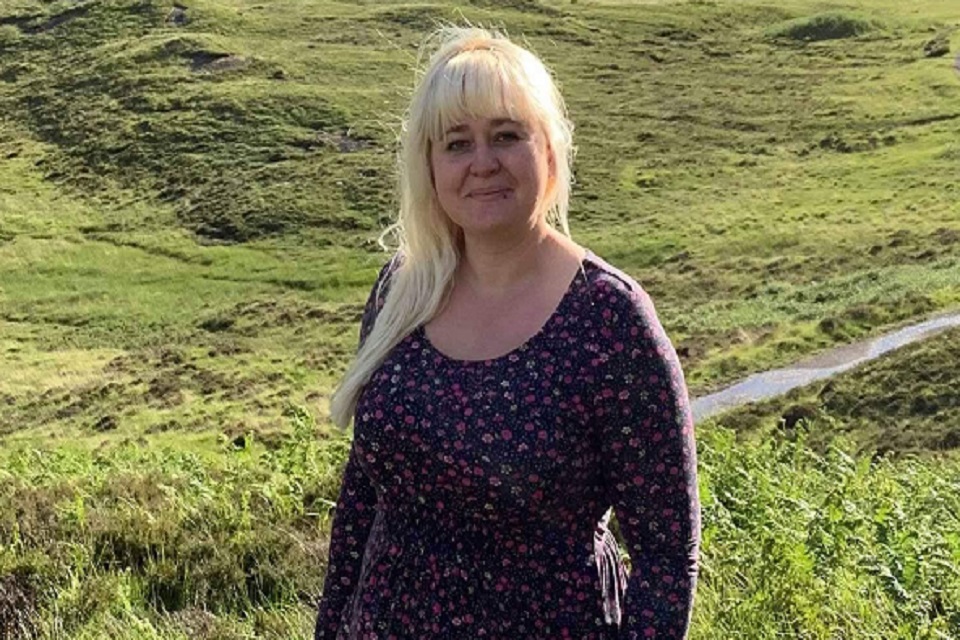
Anna Adamska, Uranium and Reactive Metals CoE Lead, Sellafield Ltd
Anna had a rewarding academic career before joining Sellafield Ltd as a Technical Specialist and Honorary Research Fellow of the Interface Analysis Centre, University of Bristol.
Her expertise in uranium started with her PhD at the Charles University in Prague, Czech Republic and the AGH University of Science and Technology in Krakow, Poland.
This was followed by 4 years at the University of Bristol, first as Marie Curie Fellow and then as a Research and Teaching Assistant while pursuing her research interests in metallic uranium, uranium hydride and other uranium compounds.
Anna’s current role is to provide technical expertise on uranium and reactive metals in support of a range of technical challenges such as fuel or bit bin exports from the First Generation Magnox Storage Pond to the Fuel Handling Plant, safety cases, hazard management strategies or metal to cement interactions in encapsulated products and general support on uranium and its corrosion products.
She enjoys maintaining the academic side of her career through collaborations with the National Nuclear Laboratory, universities and through the supervision of PhD students.
Anna says:
Working for Sellafield Ltd is truly enjoyable; it provides the perfect ground for lots of different scientific challenges and it gives me a real sense of achievement that I’m making a positive difference in the world. I’m honoured to work with such amazing technical or plant facing people; it is a truly collaborative and supportive working atmosphere.
9. Remediation
The Remediation Value Stream is responsible for the clean-up of nuclear and non-nuclear facilities across the Sellafield site.
Over the next 5 years the value stream will focus on the following research needs:
-
characterisation to understand the nature of the wastes and the hazards that this poses at different points during the facility lifecycle. Post Operational Clean Out and decontamination of facilities will be required to reduce the ongoing risk and lifetime costs associated with the facilities
-
forecasting and modelling to support decommissioning planning across the spectrum from individual facilities to different zones across the site
-
a range of enablers to facilitate decommissioning; this will include access into facilities, deployment platforms, containment systems and ways to improve operator working conditions
-
new tools and techniques for the removal of plant and equipment from the full range of redundant facilities being aware of the attendant constraints and associated hazards
-
developments in surveillance, maintenance and care and maintenance tools and techniques to tailor the requirements and therefore reduce the costs for maintenance of facilities that are awaiting further decommissioning
-
as the move away from reprocessing changes the focus for operations at Sellafield, a range of waste processing technologies and techniques including different methods for waste treatment and conditioning will need to be developed to support this next phase in the site’s life
-
tools and techniques for waste transfer, handling, storage and export
-
developments in demolition utilising industry-wide techniques tailored to the unique challenges at Sellafield
-
land remediation technologies for facility interim states and the site end state
-
knowledge and information management for wastes to be stored for long periods of time
9.1 Decommissioning techniques for alpha contaminated gloveboxes and crates
There are more than 350 alpha contaminated gloveboxes and 650 legacy crates on the Sellafield site presenting a significant decommissioning and expensive challenge.

Alpha active demonstrator
Current decommissioning plans include manual operations which are often hazardous and time consuming and therefore there is a driver to address this challenge using alternative technology to deliver safer, faster decommissioning at a lower cost.
To test a range of technologies and techniques, for glovebox and crate decommissioning, a project was initiated to design, build and operate a test facility for the development of a number of capabilities, including:
- laser cutting with a 6 degrees of freedom robotic arm
- larger containers for plutonium contaminated material
- enhanced
- ventilation with cleanable filters
- decontamination techniques
- containment
- packing fractions and drum weight
Initially a non-active facility was designed and built at the National Nuclear Laboratory in Workington where laser cutting trials took place.
Building on the learning from this, Sellafield Ltd are working collaboratively with Decommissioning Delivery Partnership partners (DDP), Integrated Decommissioning Solutions (IDS) and Cumbria Nuclear Solutions Ltd (CNSL) to continue laser cutting and actively cut up gloveboxes on the Sellafield site.
A concept for the active facility was agreed in 2018/19, building has started off-site, and the facility is expected to be commissioned on-site for use in May 2020.
PROJECT - alpha active demonstrator.
BENEFITS - less hazardous remote technique for cutting over manual operations, faster and cheaper. Cleanable filters are used, simplifying the ventilation system.
CURRENT STATUS - ongoing with the active facility ready for onsite commissioning in 2019.
DELIVERY PARTNERS - Integrated Decommissioning Solutions, Cumbria Nuclear Solutions Ltd, Taylor Kightley Engineering Co.Ltd, Cyan Tec Systems Ltd. and Lasermet Ltd.
CONTACT DETAILS - Alan Cardwell.
9.2 Characterisation of alpha contaminated environments
The Plutonium Hold-Up Measurement System (PHUMS) is a novel approach to characterising alpha-contaminated environments developed through a project with Cavendish Nuclear, with the potential for use across the nuclear industry.
The PHUMS approach uses new, portable, fast neutron detector technology and Cavendish Nuclear’s swarm imaging techniques to characterise large alpha-contaminated environments, such as a laboratory full of glove boxes, in a single operation.
Following 4 deployments in 2017/18, the active demonstrations were completed in 2018/19 together with data analysis. These demonstrations were a success and the results found to be comparable to those generated using standard baseline approaches.
A significant difference between the baseline approach is the detector technology, current approaches use heavier equipment involving 4 to 6 detectors with shielding to remove other radiation sources in the area.
The PHUMS uses a single 6kg device mounted on a lightweight fit-for-purpose deployment frame. This makes it easy to deploy reaching areas that were previously difficult to access. The work showed that the PHUMS approach could be 4 times faster and one-third the price of the current approach and it is now part of the characterisation toolkit in decommissioning projects.

Plutonium Hold-Up Measurement System
PROJECT - Plutonium Hold-Up Measurement System.
BENEFITS - a lightweight, portable technology suitable for complex environments. Safer, faster and lower cost than baseline options.
CURRENT STATUS - now part of the characterisation toolkit in use at Sellafield with further development opportunities being explored.
DELIVERY PARTNERS - Cavendish Nuclear Ltd.
CONTACT DETAILS - Bill Johnson.
HIGHLIGHT - NDA Supply Chain Awards Winner - Best Technical Innovation to Benefit an NDA Business Sellafield Business Awards 2018 - Gold.
9.3 Protecting, monitoring and assisting the nuclear operator in hazardous environments
The Sellafield site is now going through a change in focus from reprocessing activities to decommissioning, waste management and site remediation taking the site to a defined end state.
When working in a nuclear environment, a “defence-in-depth” concept is employed such that there is more than one barrier to protect operators from exposure to radioactivity. Personal protective equipment is seen as the last barrier and it’s use well into the future, is inevitable.
Although automated and robotic systems are being introduced, decommissioning activities will require significant human intervention and Sellafield Ltd is looking for solutions that will protect, monitor and assist the operator working in radioactive environments.
The ‘Protecting the Nuclear Decommissioning Operator’ competition was initiated in 2018 to invite proposals for integrated solutions that will better equip nuclear operators working in hazardous environments.
The competition consisted of the following phases:
- briefing events, facilitated by Innovate UK, Sellafield Ltd and the Knowledge Transfer Network
- phase 1: feasibility studies lasting 3 months
- phase 2: using the outputs from phase 1, projects were selected for the development phase with the aim of progressing technologies to demonstration in a non-active environment in 2019.
These projects included:
- 3D and dose mapping for improved planning
- a virtual reality for personal protective equipment training
- operator dose monitoring and biometric data
PROJECT - protecting the ‘Nuclear Decommissioning Operator’ competition.
BENEFITS - improved working experiences for operators while improving efficiency.
CURRENT STATUS - ongoing with non-active demonstrations planned in 2019.
DELIVERY PARTNERS - Innovate UK, REACT Engineering Ltd., University of Exeter and Nuvia Ltd.
CONTACT DETAILS - Andrew Cooney.
10. Decommissioning Capability Development Team

Decommissioning Capability Development Team
As the Sellafield mission changes from reprocessing operations to a focus on decommissioning and waste treatment activities, the business is continuously identifying opportunities where innovative technologies can be adopted to improve safety, efficiency or reduce wastes.
An important part of this process is the demonstration programme managed by the Decommissioning Capability Development Team which acts as the interface between the supply chain and end users at Sellafield Ltd.
The team is responsible for identifying technology that may be able to address a specific gap in the Sellafield Ltd technology “toolkit”, this might be characterisation equipment to measure radionuclides in a specific environment or a device that can protect the nuclear operator in a hazardous environment.
They could be technologies or methods used in other sectors with the potential for use in a nuclear environment.
The process follows a structured approach which includes engaging the supply chain to invite proposals and projects which have the potential to meet the needs of the Sellafield decommissioning programme are funded through to trials in both non-active and active environments at Sellafield.
A key element of the process is stakeholder engagement, this is where the capability team ensures end user inclusion, bringing plant expertise and experience to the project and ensuring any problems are addressed in the early stages.
Demonstrations are critical to the success of a project, non-active trials at mid-technology readiness levels allow for underlying issues to be addressed before an active trial is carried out in a relevant nuclear environment. At this stage Sellafield Ltd is then able to make a decision on integration of the technology into the business.
The demonstration programme has been running for 4 years with more than 30 demonstrated in-active environments at Sellafield.
10.1 Size reduction of metallic intermediate level waste
As part of the continuing hazard reduction programme, sludge clearance operations are required in the First Generation Magnox Storage Pond and in order to complete this, Magnox fuel cooling skips need to be removed first.
The skips fall into the intermediate level waste range and it’s possible to place 2 of them into containers for interim storage in the Windscale Advanced Gas-cooled Reactor Box Store.

First Generation Magnox Storage Pond skip disposal
This approach will mean that the store will be full by the end of 2020 and therefore an alternative solution is required. By size reducing the skips, there is an opportunity to pack 6 of them into a container for transport to the Miscellaneous Beta Gamma Waste Store (MBGWS). Here they can be unloaded and repacked into MBGW boxes.
A project was initiated to provide a facility for the decontamination and size reduction of empty skips, the initial phases of which included a study to identify the most suitable size reduction technique.
This was found to be laser cutting and the Waste Monitoring and Compaction Plant (WAMAC) identified as a suitable location.
Phase 3 of the project was completed in 2018/19 by the Decommissioning Alliance, covering design, development and non-active trials. A Laser Cutting Module (LCM) was designed by Taylor Kightley Engineering (the lead sub-contractor), built and successfully tested at Cyan Tec near Loughborough.
The LCM utilises 2 robots to cut up skips using laser technology, then handle and load the cut sections ready for export. Off-site trials were successful in demonstrating this technology. The next phase of the project is installation and non-active safety testing in WAMAC at Sellafield in 2019 with preparation of safety cases for active commissioning.
PROJECT - First Generation Magnox Storage Pond (FGMSP) skip disposal.
BENEFITS - this project has facilitated a strategy change in the management and storage of skips from FGMSP and a key enabler to the continuing high hazard reduction programme at Sellafield. On completion of its initial challenge to process 100 skips from the pond, there is potential for the facility to handle skips from other parts of the site and metallic ILW generally.
CURRENT STATUS - phase 3 has been completed with phase 4 planned during 2019 and active commissioning expected by April 2020.
DELIVERY PARTNERS - The Decommissioning Alliance, Integrated Decommissioning Solutions, Taylor Kightley Engineering Co. Ltd., CyanTec Systems Ltd and Lasermet Ltd.
CONTACT DETAILS - Stephen Balmforth.
10.2 Waste management and storage of Plutonium Contaminated Waste
Management of Plutonium Contaminated Material (PCM) is expensive and over the lifetime of the Sellafield site, PCM management is expected to cost in the region of £2 billion. Additionally, there are some key decisions on processing and storage of PCM that need to be made in the near future, which represent a further £1 billion of investment.
To provide information for these decisions, there is a need to develop a capability that will improve the sorting and segregation of PCM from low level waste.
A short, focussed study was initiated by Sellafield Ltd, in FY 2018/19, to develop a concept for an active demonstrator with key expertise from Cumbria Nuclear Solutions Ltd, non-nuclear input from RED Engineering and experience from other decommissioning activities.
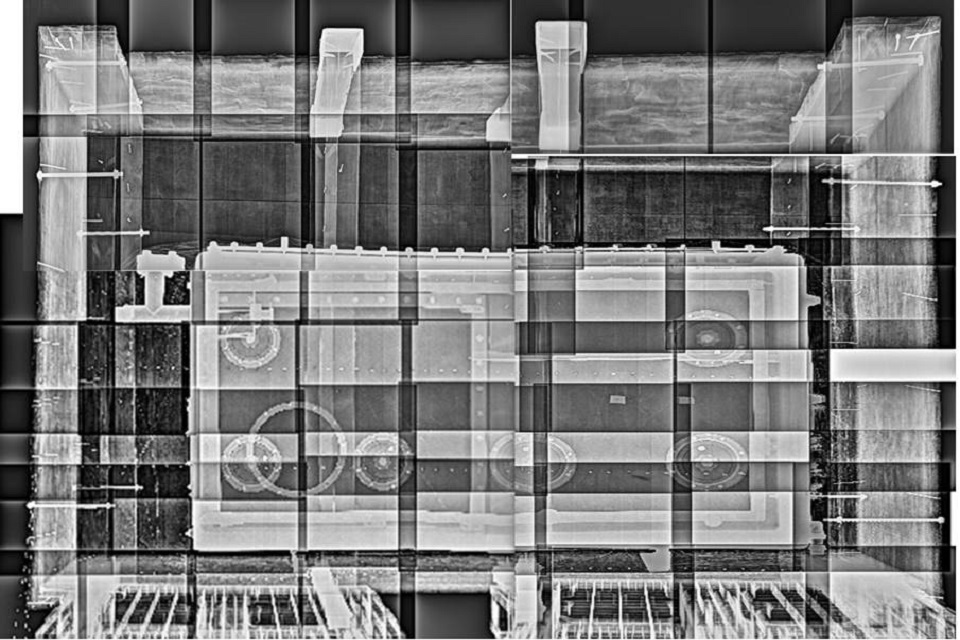
Alpha sort and segregate active demonstrator
The output of the study was a concept for a demonstration facility with an initial design. Key elements of the study included use of available technology, space constraints, real-time characterisation, decontamination approaches and mechanical techniques to segregate and recover low level waste.
The concept will proceed to the next phase for the design, build, installation and commissioning of an active demonstrator facility and this phase will begin in 2019/20.
PROJECT - Alpha sort and segregate active demonstrator.
BENEFITS - this project has the potential to have a significant impact on the estimated lifetime costs for the management of PCM including savings on waste containers, processing operations, interim storage, transport and final disposal.
CURRENT STATUS - the first study phase is complete with the next phase for design, build, install and commission a new facility expected to begin in FY 2019/20.
DELIVERY PARTNERS - Cumbria Nuclear Solutions Ltd, RED Engineering, NSG Environmental Ltd and ORANO.
CONTACT DETAILS - Bill Johnson.
10.3 Characterisation and size reduction of borderline intermediate level waste
Management of decommissioning waste from the First Generation Magnox Storage Pond (FGMSP) is a key part of the efficient clean-up programme for the facility and there are some larger items of waste that fall into borderline intermediate level waste category.
The current plan for these items is transfer to the Windscale Advanced Gas-cooled Reactor (WAGR) store for interim storage, however current predictions indicate that the store will be full by the end of FY 2019/20 and an alternative solution is required.
The aim of this project is to introduce a new facility that will provide improved characterisation and size reduction for borderline intermediate level waste so that existing waste routes may be used and interim storage in the WAGR store avoided.

A facility that will provide improved characterisation and size reduction for borderline intermediate level waste
It will include commercial off-the-shelf technology for monitoring combined with a purpose-built diamond wire cutting device for size reduction in a modular containment facility.
The project is a successful collaboration between Sellafield Ltd and Integrated Decommissioning Solution with phase 1 of the project, a feasibility study, completed in July 2018. The 2nd phase will be putting everything in place to enable commissioning of the facility to take place in September 2019. Phase 3, starting in September 2019 will look to produce detailed learning from experience for future development of a site wide facility to handle metallic decommissioning wastes.
PROJECT - Decommissioning Waste Services Partnership.
BENEFITS - the project will facilitate the efficient removal of waste from FGMSP to meet programme deliverables. It will relieve the pressure on the WAGR store and it has the potential to be used in the wider decommissioning mission.
CURRENT STATUS - the feasibility study is complete with phase 2 of the project, the planning and design phase planned in FY 2019/20 followed by installation of the monitoring and cutting capability. Active demonstrations will then begin on items stored in the WAGR store or directly transferred from FGMSP until 2021.
DELIVERY PARTNERS - Integrated Decommissioning Solutions.
CONTACT DETAILS - Rachel Campbell.
10.4 Inspection of inaccessible areas in nuclear facilities
As part of the asset management programme, Sellafield Ltd requires technology that can be used to inspect inaccessible areas of facilities such as roof structures and has been exploring the potential for lighter than air vehicles to provide remote surveying with extended flight times and minimal down-draught.
In FY 2018/19, a supply chain challenge via LINC (Liaise Innovate Network Collaborate) invited companies to propose solutions using commercial off-the-shelf technology that could be adapted for the internal inspection of one of the Calder Hall turbine halls.The technology will be used to identify cracks in the roof using a live camera feed back to the operator.
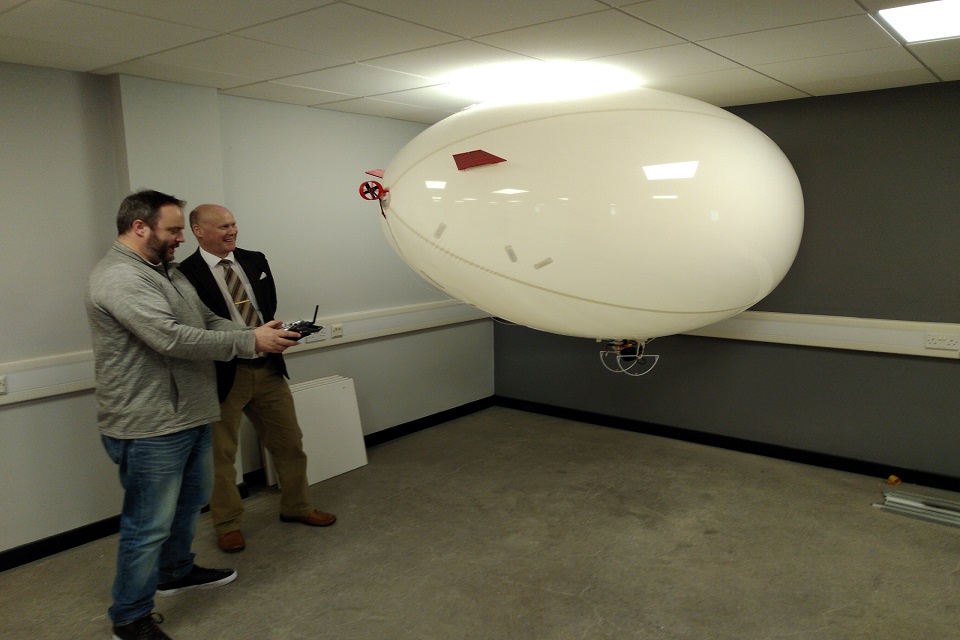
Lighter than air inspection vehicle
The unmanned aerial vehicle (UAV), which resembles an airship in shape, has advantages over other drone type UAVs for example:
- low mass (in the order of 250g) and this low risk in the event of failure
- impact/puncture resistant helium balloon making it suitable for use in a nuclear environment
- It’s safe to operate indoors, and this increases the variety of environments that the device can be deployed in
- flight times of more than an hour
- low cost and easy to replace
Two projects were chosen from 10 proposals for development and demonstration in non-active facilities, in Workington and Ulverston. The success and low cost of the trials demonstrated that the technology is a viable option for a nuclear environment and the next phase is to test them in the Calder Hall turbine hall.
PROJECT - lighter than air inspection vehicle.
BENEFITS - low cost technology that provides survey information in inaccessible areas. Safer, faster and lower cost than baseline options.
CURRENT STATUS - further demonstrations are planned for 2019/20.
DELIVERY PARTNERS - Rovtech Solutions Ltd and Furness Engineering and Technology Ltd.
CONTACT DETAILS - James Moore.
10.5 Barry Lennox - The University of Manchester

Barry Lennox, The University of Manchester
A frequent visitor to Cumbria, Professor Barry Lennox is based at the Dalton Cumbria Facility which is part of The University of Manchester Dalton Nuclear Institute.
Barry leads research to develop robotic solutions for nuclear challenges with a focus on:
- enhancing performance of teleoperated devices
- increasing the ability of autonomous systems and proving capability in nuclear environments
- identifying and developing technologies that could represent a step change in decommissioning activities
Specific projects that Barry has been involved in with Sellafield Ltd are AVEXIS, MIRRAX and CARMA. Originally developed for deployment in the legacy storage ponds, AVEXIS was deployed into the First Generation Magnox Swarf Storage Pond (FGMSP) where it was used to move swarf inside the silos. AVEXIS continues to be developed in collaboration with the Japan Atomic Energy Agency to help to locate the melted fuel in the Fukushima Daiichi reactors.
MIRRAX is a shape changing robot, designed to be deployed through ports as small as 120 mm. MIRRAX was deployed in FGMSP where it was able to capture a 3D image of an area that hadn’t been entered for more than 30 years. CARMA is an autonomous robot, designed to detect and locate alpha, beta and gamma contamination in large floor spaces. It has now been successfully demonstrated in multiple facilities on the Sellafield site.
Barry says:
It is rewarding to see The University of Manchester robots being deployed on the Sellafield site to solve real challenges.
10.6 Liz Ostle - Decontamination Technical Support
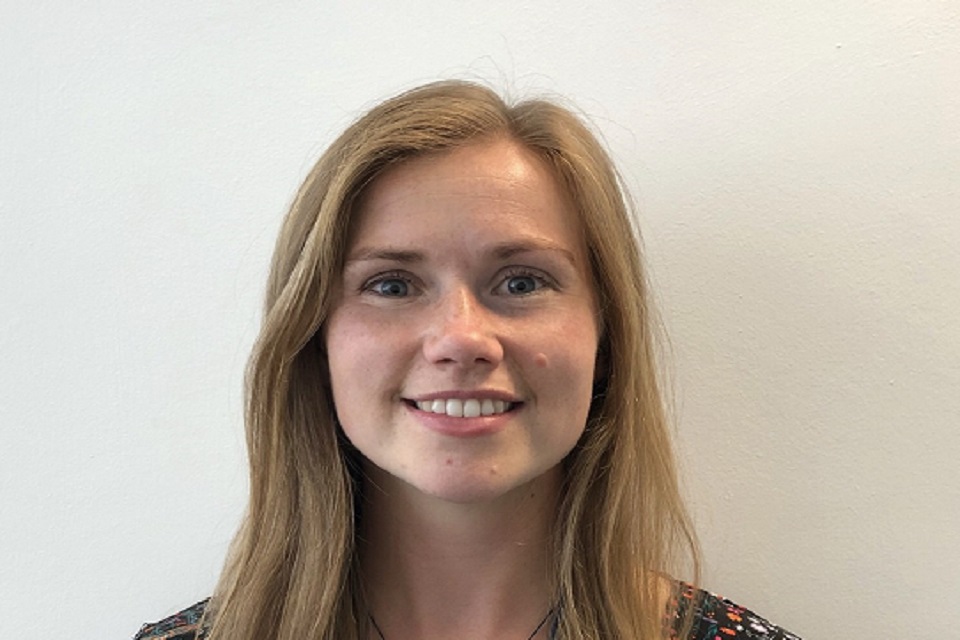
Liz Ostle, Decontamination Technical Support, Sellafield Ltd
Liz is a geography graduate and joined Sellafield Ltd after university. She is part of a team providing decontamination advice, guidance and training to personnel and projects across the Sellafield site. This type of support can be quite varied, tailored to suit the needs of the customer and ranges from a simple phone call or an email to a documented advice note.
For example, the team provided support to the First Generation Reprocessing Plant Stack demolition project which involved a technique to decontaminate the flue liner prior to decommissioning. Other recent work includes plant recovery using water jetting as a means to unblock pipework and reduce dose uptake and the team provides expertise on recovery plans in the event of an unexpected release.
As the site moves towards initiating more decommissioning projects Liz’s team is increasingly engaged to support Post Operational clean Out strategies, currently predominately within Thorp which completed its reprocessing mission in 2018. An important part of this is Research and Development of new technologies, methods and products to support future decontamination tasks.
Liz enjoys the diversity of her job and says:
No two problems are the same, it is complex at times, but the problem-solving aspect keeps it interesting and challenging. I like being out and about on various plants, meeting new people and seeing different things all the time. I am a practical person, so this role allows for that and helps significantly, especially when it comes to deployment of a technique or determining the likelihood of a certain solution being successful.
11. Strategy and Technical
The Strategy and Technical team is responsible for the Research and Development programmes that address the medium to long-term needs of the business.
The key science and technology themes where there are opportunities for the development of innovative technologies, tools and techniques, to reduce costs, improve safety and reduce timescales are managed by Integrated Research Teams.
The key topics for investment over the next 5 years are:
- science including subthemes on materials, process chemistry, particulates, data and environment
- waste treatment, conditioning and packages
- conditioning monitoring and inspection
- in-situ measurement
- Post Operational Clean Out
- people (specifically Research and Development on protecting the nuclear operator)
- robotics and artificial intelligence
- asset management
The team is also responsible for representing Sellafield Ltd on the various university engagement programmes and ensuring co-ordination across the business. It also manages the Game Changers programme.
11.1 Game Changers
Game Changers, the Sellafield Ltd sponsored initiative encouraging innovation to address complex nuclear decommissioning projects, is in its 4th year.
During 2018/19, Game Changers held a challenge-led event focussing on Post Operational Clean Out (POCO) attracting 11 applications, with the following projects awarded funding for feasibility studies:
- REACH - a flexible toolkit to allow remote access of difficult to reach areas, developed by Eadon Consulting Ltd.
- a hybrid gamma camera developed by the University of Leicester for medical imaging, which combines an optical and gamma camera in a portable system. Translation of this technology to POCO is being supported by Cavendish Nuclear Ltd.
- National Nuclear Laboratory’s N-Sponge – a versatile method for separating, collecting and concentrating organic wastes
Each of the projects undertook activities to support further development of their technology including building prototypes and engaging with Sellafield Ltd challenge owners and operational staff. Further challenge events on asset management and the use of robotics and artificial intelligence at Sellafield are planned for 2019/20.
A challenge for innovation focussing on the detection of sharp objects in gloveboxes was put into the supply chain and this generated 5 applications for funding. i3D Robotics were awarded funding for a feasibility study to develop and demonstrate their object detection and vision information systems for use in gloveboxes.
Projects awarded proof-of-concept funding during 2018/19 included:
- range-resolved hydrogen sensing for the in-situ condition monitoring of stored waste, with the Fraunhofer Centre for Applied Photonics.
- hyperspectral imaging to monitor packaged nuclear waste, developed by the University of Strathclyde.
- biomorphic sensors for condition monitoring and inspection in critical environments with enabling MNT UK Ltd. and Lancaster University.
- in-situ assay of the alpha activity of solutions with Pajarito Scientific Corporation.
Two projects of note which successfully demonstrated significant technical and commercial potential are Rawwater Engineering’s underwater crack repair system and Cryoroc’s freeze casting for waste immobilisation.
Both projects have continued to receive Game Changers support to fully develop their technology for deployment at Sellafield. Rawwater Engineering has successfully leveraged additional funding to develop a crack repair system for the Ministry of Defence and this project has received considerable interest from the international nuclear sector.
Game Changers has continued to develop relationships with tier 2 organisations and Innovate UK to expand the programme to increase its impact across the nuclear and non-nuclear sector.
To find out more, contact: Andrew Cooney Andrew.s.cooney@sellafieldsites.com or visit Game Changers
Delivery partners - National Nuclear Laboratory and FIS360
11.2 University engagement
Sellafield Ltd., along with key partners such as the Nuclear Decommissioning Authority and the National Nuclear Laboratory and other site licensed companies has supported Research and Development in universities for many years.
TRANSCEND
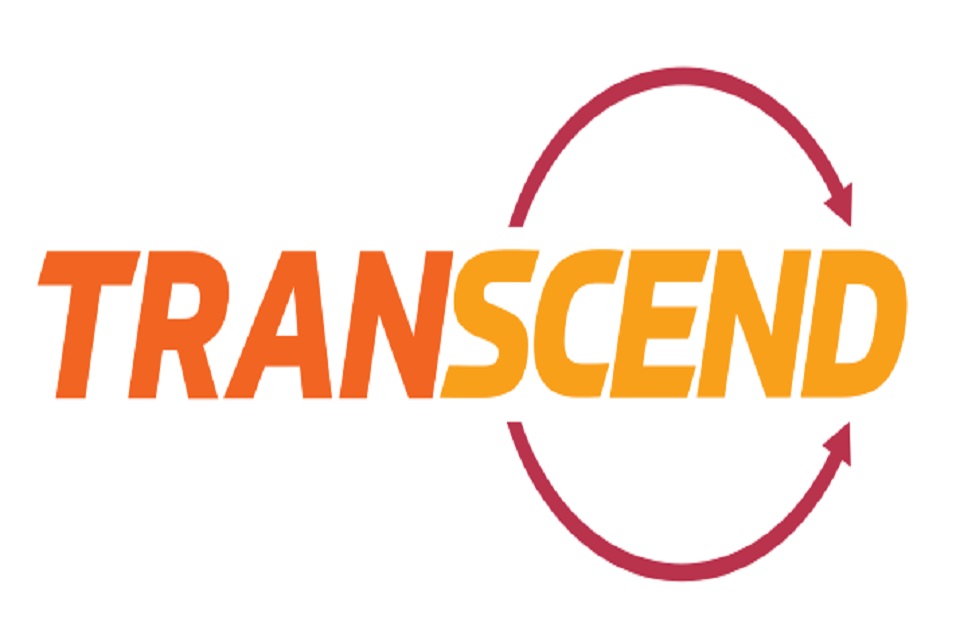
Transformative Science and Engineering for Nuclear Decommissioning (TRANSCEND)
Transformative Science and Engineering for Nuclear Decommissioning (TRANSCEND) is the latest example of a collaborative research consortium of 11 universities and 8 industrial project partners. The £9.4 million research programme comprises 40 projects which will address some of the key challenges within the areas of nuclear decommissioning and waste management.
The work of the consortium continues, rationalises and extends that previously undertaken on Decommissioning, Immobilisation and Storage Solutions for Nuclear Waste Inventories (DISTINCTIVE) with increased breadth, particularly in bringing together the academic and industrial communities to take more of a whole lifecycle approach to decommissioning and waste management.
Reflecting this, TRANSCEND has a greater number of industrial partners, more academic partners and has also attracted more funding than DISTINCTIVE.
There are 4 key themes within the TRANSCEND programme: integrated waste management, site decommissioning and remediation, spent fuels and nuclear materials.
To find out more, visit TRANSCEND
Centres for Doctoral Training
It is typical for university engagement to be over a long period. These interactions represent long term investments with benefits reaped directly by Sellafield Ltd, the supply chain or the wider nuclear industry.
Recognising this, Centres for Doctoral Training (CDTs) have been created to train the next generation of nuclear scientist and engineers. A new one is initiated every 4 to 5 years in line with funding cycles and the next one is called Growing skills for Reliable Economic Energy from Nuclear (GREEN) which is currently recruiting students for September 2019.
The GREEN CDT is a consortium of 5 universities; Lancaster, Leeds, Liverpool, Manchester and Sheffield.
To find out more, visit Nuclear Energy
Centre for Innovative Nuclear Decommissioning
The Centre for Innovative Nuclear Decommissioning (CINDe) is led by National Nuclear Laboratory (NNL), in partnership with Sellafield Ltd and a network of universities includes Manchester, Lancaster, Liverpool and Cumbria.
CINDe is the first of its kind, with national, international and multi-disciplinary PhD researchers based within NNL facilities for the duration of their projects, while also being able to use facilities within their respective universities. This access to expertise and equipment within both the academic and industrial communities ensures that they develop an excellent understanding of the nuclear decommissioning challenges along with providing a robust academic base, for the work performed.
There are currently 13 PhD projects, within CINDe, all of which are directly linked to decommissioning challenges, with supervision provided by both academic and industrial staff. This direct linkage of challenges to research work is designed to ensure a pipeline of knowledge and skilled researchers into the nuclear decommissioning sector.
In 2014, Dan Whittaker joined NNL after completing a Master’s in Chemistry and a PhD at The University of Manchester. The PhD course was the first iteration of the Doctoral Training programme called Nuclear FiRST.
This acted as an excellent springboard into the nuclear industry with the first year being on everything from prospecting and mining to the politics of geodisposal.
Dan’s core studies and interest lay with next generation reprocessing with his PhD being closely aligned with both european and international programmes. Establishing these academic and industrial links through the CDT naturally led Dan to NNL, working primarily on similar future advanced fuel cycle research.
Dan splits his time between this and radiation chemistry and is slowly becoming recognised in these fields both in the UK and internationally. During his time with NNL Dan has become a Chartered Chemist and a full member of 2 professional bodies.
Dan said:
If it wasn’t for the CDT programme I’d have never considered a job in the nuclear industry, I would almost certainly have become a scuba instructor. The work we do is incredibly interesting and varied using world class facilities and materials. It’s for these reasons that I know this is the career for me.
Robert Stein studied for his PhD with the Nuclear FiRST CDT at the universities of Sheffield and Manchester. He used destructive and non-destructive analysis techniques including x-ray computed tomography and scanning electron microscopy coupled with image analysis to quantify changes in material microstructure and validate numerical models of macrostructural behaviour.
During his time within the CDT Rob was also able to broaden his studies in a range of topics including nuclear chemistry, environmental radioactivity, the nuclear fuel cycle, materials and corrosion, radioactive waste immobilisation and nuclear engineering.
These experiences along with a Master’s in Civil and Architectural Engineering have given Rob a broad understanding of the challenges at the Sellafield site and in particular in the field of the construction of facilities for storage and processing of nuclear materials.
Rob is now currently responsible for the civil construction of a facility which will process Special Nuclear Material into a form suitable for long-term storage in the Sellafield Product and Residue Store.
Simon Malone Science IRT Portfolio Manager, Sellafield Ltd said:
The examples provided in this article show that long-term investment in a skills pipeline via consortia like TRANSCEND and CDTs really does work. And that’s in addition to all the work they do in academia.
11.3 Alternative treatment options for future waste challenges
The aim of the Thermal Treatment Integrated Project Team (TTIPT) is to develop thermal treatment processes in the UK to the level at which they can be considered a technically viable option for the treatment of higher active waste across the UK nuclear industry.
The IPT is a Nuclear Decommissioning Authority (NDA) initiative, managed by Sellafield Ltd and which includes key stakeholders and members of the regulatory community. 2018/19 was a successful year for the TTIPT because it saw the completion of a series of 12 demonstration melts in National Nuclear Laboratory’s central laboratory, 6 non-active melts followed by 6 active melts, undertaken to confirm understanding of the behaviour of volatile and semi-volatile species in high temperature environments.
This melt programme was directly funded by the Nuclear Decommissioning Authority (NDA) through the Direct Research Portfolio and the programme was overseen by Galson Sciences Ltd.
The melt series covered the following wastes:
- loose fuel pond sludge
- fuel pond sludge in a steel skip
- ion exchange media
- plutonium contaminated material (not replicated actively)
- decommissioning wastes
- uranics
Further melts carried out during the year included aluminium and graphite, Magnox swarf and uranium metal.
A study relating to the thermal treatment of the Site Ion Exchange Effluent Plant (SIXEP) wastes and the First Generation Magnox Storage Pond (FGMSP) sludge was concluded in 2018/19 with the recommendation that thermal treatment is a technically viable option for the treatment of these wastes, the experimental programme supported these conclusions and this work will now be used to inform and underpin the treatment decision for these wastes.
PROJECT - Thermal treatment Integrated Project Team.
BENEFITS - this project aims to demonstrate the potential for thermal treatment to deliver several benefits over cementitious grout encapsulation technology such as significant waste volume reduction, passivity of product, integrity of product, improved environmental performance and simplified interim storage requirements.
CURRENT STATUS - the conclusion of the development work relating to SIXEP wastes and FGMSP sludge has led to the recommendation that thermal treatment be considered a technically credible option for the treatment of these wastes.
The focus of the study programme in 2019/20 and beyond is to confirm the technical suitability and benefits of thermal treatment for plutonium contaminated material wastes, decommissioning wastes, problematic wastes and enterprise fuels.
DELIVERY PARTNERS - NDA, National Nuclear Laboratory, TÜV SÜD Nuclear Technologies Ltd., Galson Sciences Ltd., Atomic Weapons Establishment and Radioactive Waste Management.
CONTACT DETAILS - Mark Dowson.
11.4 Removal of plutonium powder residues from gloveboxes
There are over 700 plutonium-contaminated gloveboxes in several facilities across the Sellafield site that require decommissioning in the next few years. Many gloveboxes contain quantities of plutonium oxide powder residues that present a significant dose hazard to operators undertaking decommissioning work.
Sellafield Ltd sought an innovative solution to reduce the dose and other risks to operators performing glovebox cleaning.

Glovebox cleaning tool
The current method to retrieve the powder involves the use of a dustpan and brush and an off-the-shelf battery powered vacuum cleaner. Both methods have limitations in that the dust pan and brush cannot retrieve powder from crevices and the vacuum cleaner cannot always fit through glovebox ports. In addition, the vacuum cannot be recharged and so it must be disposed of as plutonium contaminated material waste after around 15 minutes of single use.
The Special Nuclear Material (SNM) Post Operational Clean Out (POCO) team has been leading a collaborative project, which includes stakeholders from within the business and the supply chain, to identify an engineering solution for the recovery of residues during POCO operations.This approach enabled this fast paced and dynamic project to be delivered successfully in developing a prototype, non-active and active demonstrators whilst satisfying the requirements of all stakeholders involved.
SNM POCO took the lead on this project to develop a solution for POCO operations in the Sellafield MOX Plant with the longer term aim of application across other plants at Sellafield and the wider Nuclear Decommissioning Authority estate throughout the UK.
The device developed in 2018/19 is a modified off-the-shelf vacuum cleaner that:
- can be posted into a 6” standard glovebox port
- collects residues greater than 5 microns
- includes a segregation tool for the safe recovery of SNM powder from debris without breaking containment
- is capable of cleaning around complex equipment often found in gloveboxes due to a flexible and compact design including a gooseneck feature
- locates powders visually using an endoscopic camera attachment which communicates wirelessly to a screen outside the glovebox
- allows for cleaning whilst maintaining glovebox depression
The next step of the project to trial the system on plant in an actual glovebox, due to take place in July 2019.
Demonstrating the technology in a real glovebox will increase its technology readiness levels (TRL) to a TRL 8 – active commissioning on plant. The technology will then be one step away from operational use on plant in an active environment (TRL 9).
PROJECT - glovebox cleaning tool.
BENEFITS - this project aims to deliver an innovative solution to SNM recovery in gloveboxes, reduce operator risk and increase efficiency.
CURRENT STATUS - the technology has been demonstrated in a non-active environment using a mock-glovebox and an active demonstration has been planned for April 2019.
DELIVERY PARTNERS - RED Engineering and ÜV SÜD Nuclear Technologies.
CONTACT DETAILS - Jonathan Watters.
11.5 n-situ sampling of concrete, processing and analysis
In-situ analysis, i.e. taking analysis to the sample rather than taking the sample to the laboratory, may offer significant benefits in terms of quicker analysis, less secondary waste and reduced infrastructure and asset costs.
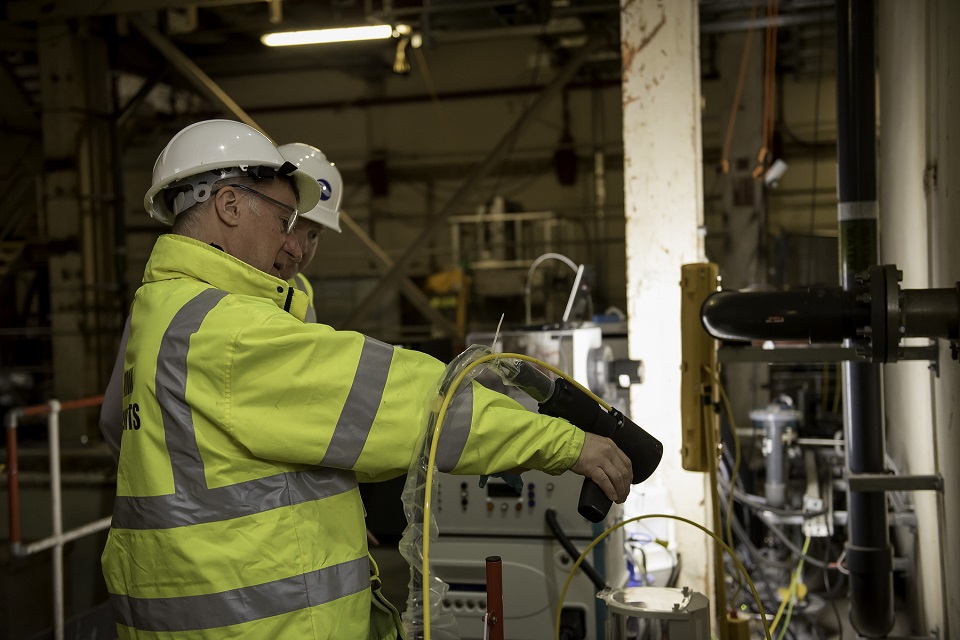
A ViridiScan demonstration
In 2018/19 an innovative portable laser sampling technique, developed by Viridian Consultants and funded via the Innovate UK process, was put through its paces with two non-active demonstrations completed.
These demonstrations followed a 41-month research and development programme to build a mobile tool for in-situ sampling, processing and analysis by Inductively Coupled Plasma Mass Spectrometry.
ViridiScan uses a laser to remove source material, this is transported to a sample collection pod in a safe zone about 20 metres away for processing and analysis. The technique can be used on materials such as concrete, wood, plastic and brick for a wide range of radionuclides and it is particularly useful for analysis of uranium and plutonium on plant.
The technology was successfully tested in 2 locations; a concrete wall in the Windscale Advanced Gas-cooled Reactor turbine hall and a non-active pond at National Nuclear Laboratory in Workington within one week, highlighting the flexibility and mobility of the technology together with its analytical capability. The progress made in the development of this technology also highlights the importance of the Innovate UK process in supporting Research and Development projects within the nuclear industry.
PROJECT - ViridiScan demonstration.
BENEFITS - the benefit this technology provides is in-situ characterisation which avoids transportation of samples across site, sometimes off-site, for analysis. This enables characterisation to be carried out rapidly and therefore more cost effectively.
CURRENT STATUS - the deployment of the laser sampling head on a pole at the National Nuclear Laboratory showed potential for application in Pile Fuel Storage Pond bay areas at Sellafield. Wall and floor areas of this facility require characterisation and this opportunity will be explored in 2019/20.
DELIVERY PARTNERS - Viridian Consultants Ltd and Innovate UK.
CONTACT DETAILS - Peter Kinsella.
HIGHLIGHT - NDA Supply Chain Awards Winners – Minister’s SME Award.
11.6 Horizon scanning capability
No matter how good an organisation is at what it does, if it cannot spot changes in technology and act on them, the world will change around it, and it could quickly be left behind. This is why horizon scanning is such an important business capability in today’s world.
Towards the end of FY 2018/19, Sellafield Ltd formed an emerging technology team to improve its horizon scanning capability for technologies.
There are 2 main objectives for this work
- to improve the visibility of potential solutions for Sellafield Ltd’s challenges today
- to prepare Sellafield Ltd’s strategies for future opportunities and risks
Everyone working for, or with, Sellafield Ltd has a part to play in horizon scanning, everybody encounters and learns about new technologies in both their professional and personal lives, so there is a lot of knowledge about technologies already in the business.
To harness this knowledge, the team has launched the “Sellafield Drop-Box”; a communication channel for people from across the business to send in information about technologies they encounter. These are then assessed for their potential to meet Sellafield Ltd’s objectives and challenges and carried forward for development if appropriate.
The team is also seeking tools that can assist the business in horizon scanning. For example, work is being undertaken with Cogentus Consulting Ltd. to pilot their idea catalogue Ttechnology database, which is being used by teams within Sellafield Ltd to challenge assumptions and improve visibility of technologies being developed across the world.
By being able to systematically search for new technologies, Sellafield Ltd can move forwards with the confidence that solutions have been selected via truly informed decisions.
To find out more contact: Andres Alfaro andres.alfaro@sellafieldsites.com
12. Supply chain companies and organisations
- Atomic Weapons Establishment
- Nuvia Ltd
- Cavendish Nuclear Ltd
- ORANO
- Costain Group PLC
- Queen’s University Belfast
- Create Technologies Ltd
- Radioactive Waste Management
- Cumbria Nuclear Solutions Ltd: REACT Engineering Ltd, James Fisher Nuclear Ltd and Shepley Engineers
- Cyan Tec Systems Ltd
- RED Engineering
- DBD Ltd
- Rovtech Solutions Ltd
- Design Services Alliance: AXIOM (Wood, Jacobs, Assystem, Mott Macdonald) and Progressive Alliance (Cavendish Nuclear Ltd, AECOM)
- Stainless Metalcraft (Chatteris) Ltd
- Exova (now part of Elements Materials Technology)
- Taylor Kightley Engineering Co.Ltd
- Fauske & Associates
- LLC
- The Decommissioning Alliance (Atkins Ltd, Jacobs UK Ltd, Westinghouse Electric Company UK Ltd)
- FIS360
- The University of Manchester
- Furness Engineering and Technology Ltd
- TSP Engineering Ltd
- Galson Sciences Ltd
- TÜV SÜD Nuclear Technologies Ltd
- Goodwin International Ltd
- University of Birmingham
- Harwell (part of Magnox Limited)
- University of Bristol
- Imperial College London
- University of Cumbria
- Innovate UK
- University of Exeter
- Integrated Decommissioning Solutions: Atkins Ltd, Hertel (UK) Ltd, North West Projects Ltd, Westlakes Engineering Ltd)
- University of Leeds
- Lancaster University
- University of Liverpool
- Lasermet Ltd
- University of Sheffield
- London South Bank University
- University of Southampton
- National Nuclear Laboratory
- University of Surrey
- Nichols Group
- University of Strathclyde Glasgow
- NSG Environmental Ltd
- Viridian Consultants Ltd
- Nuclear Advanced Manufacturing Research Centre
- West Cumberland Engineering Ltd
- Nuclear Decommissioning Authority
- Wood

